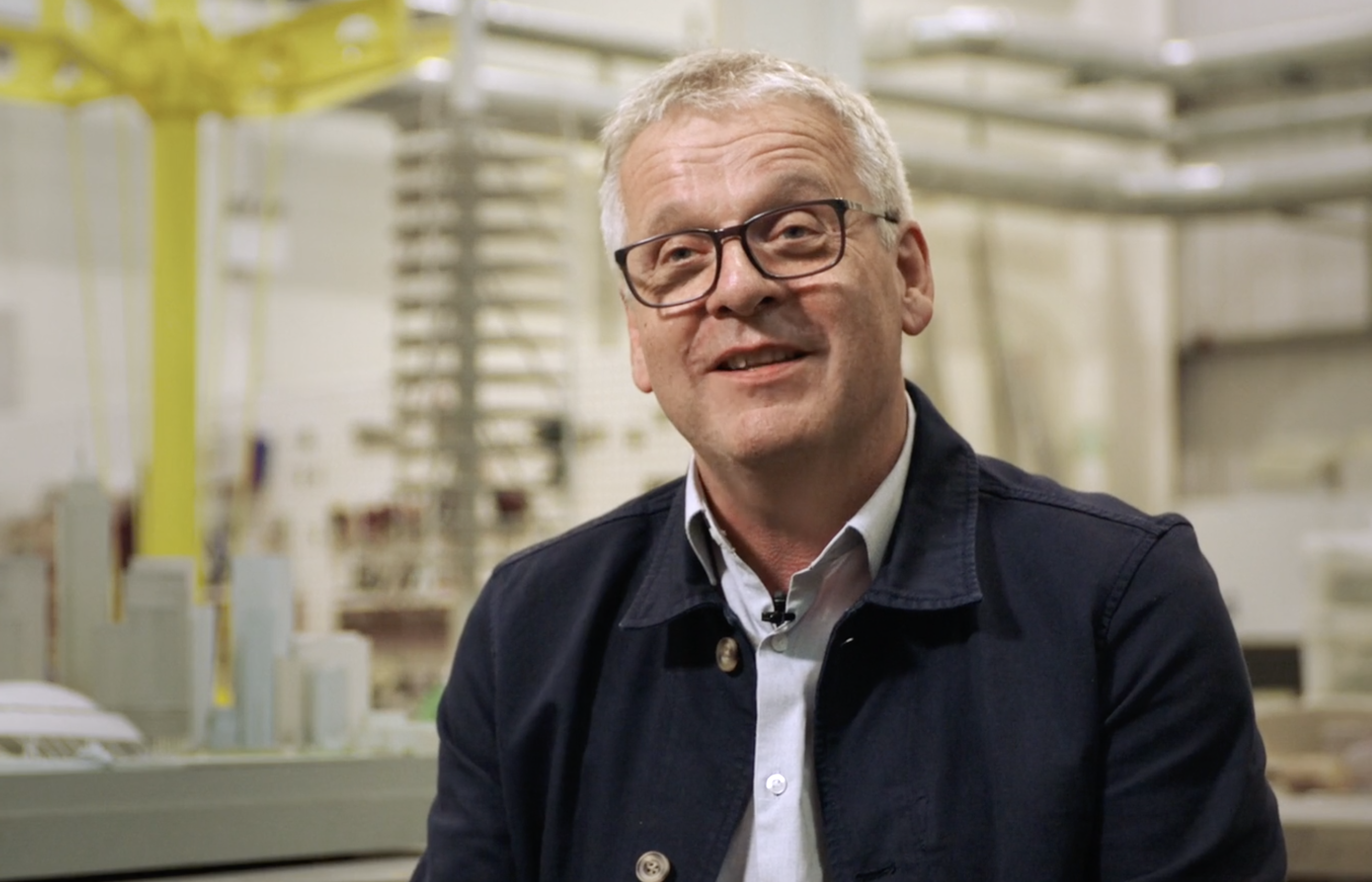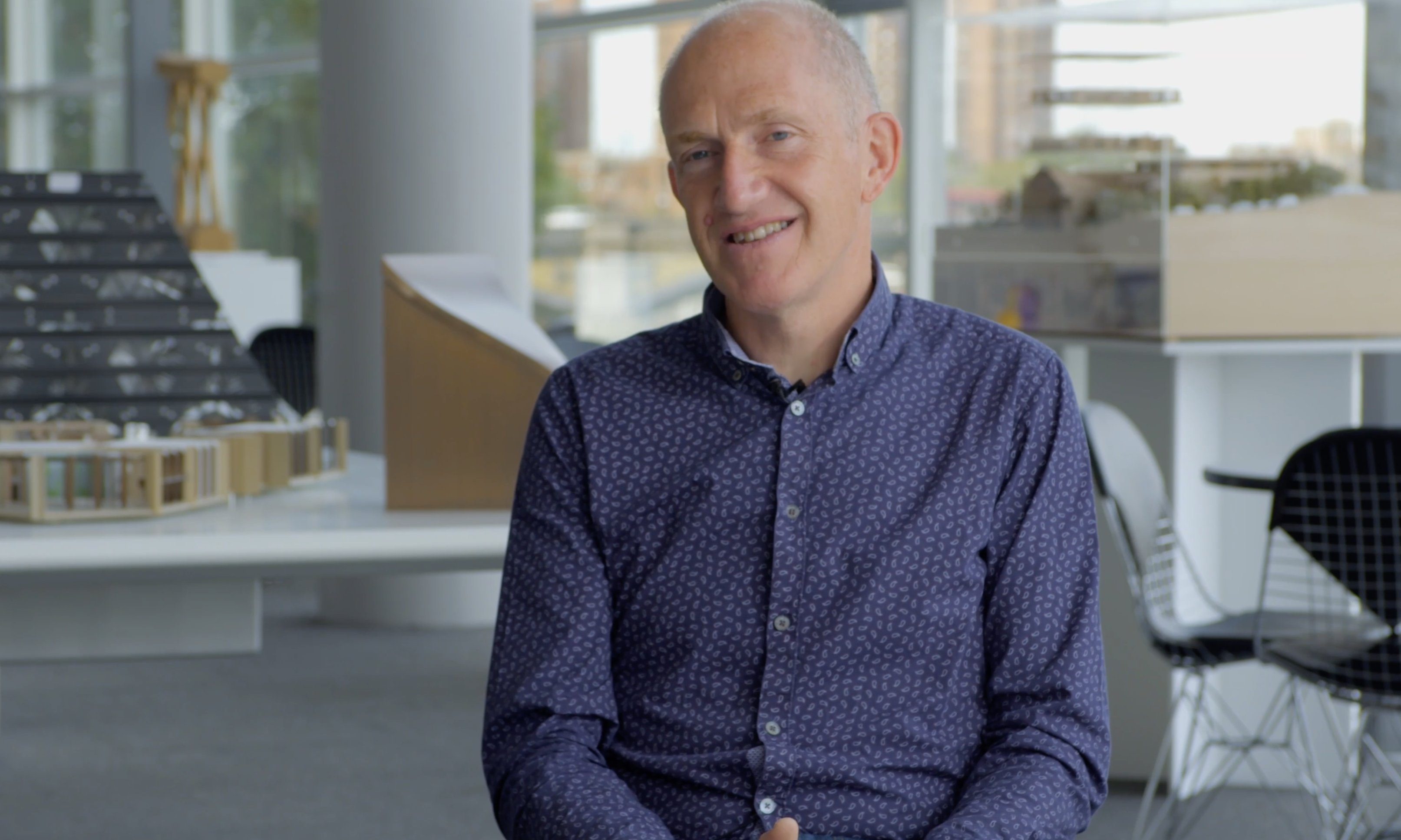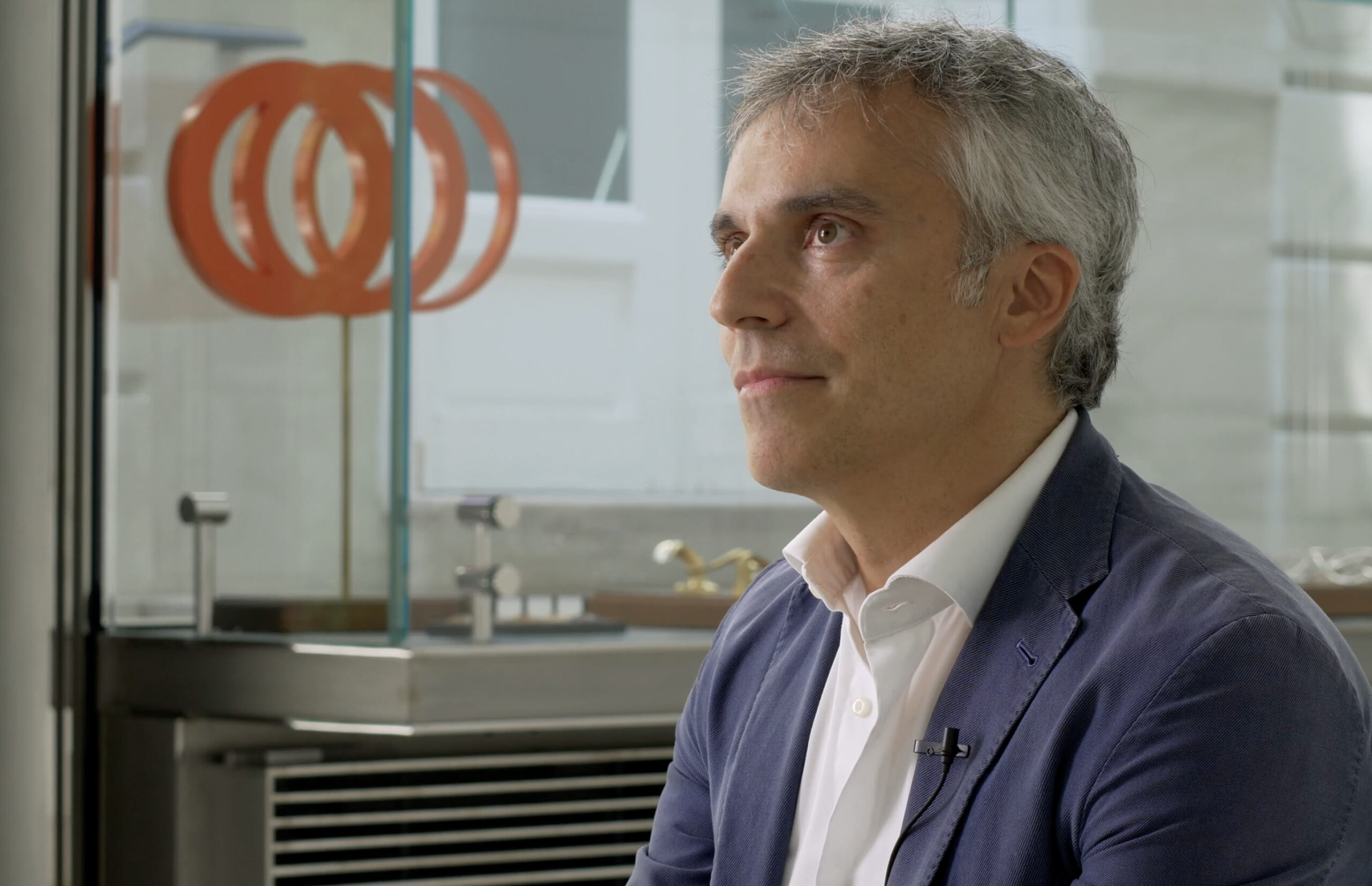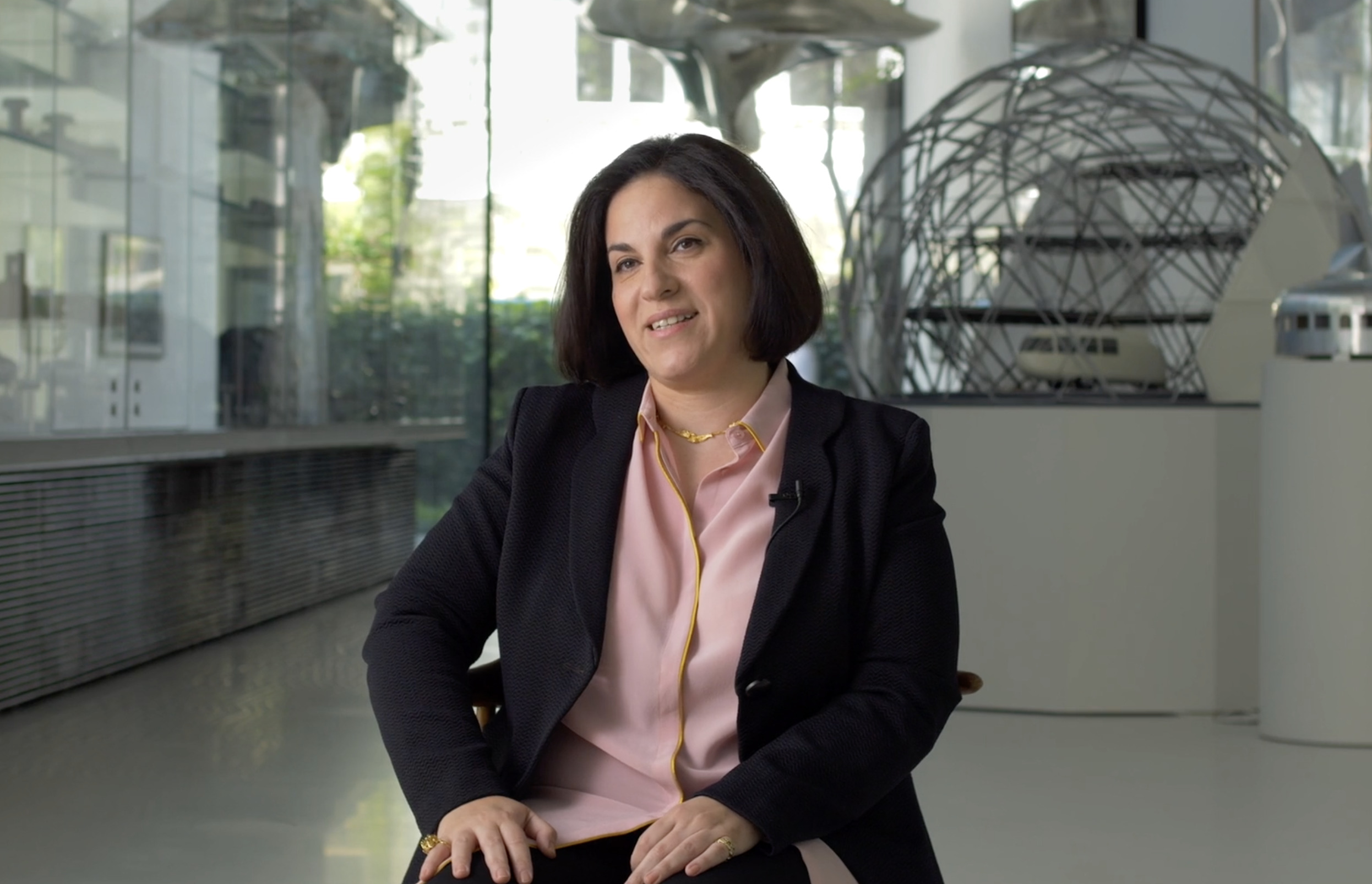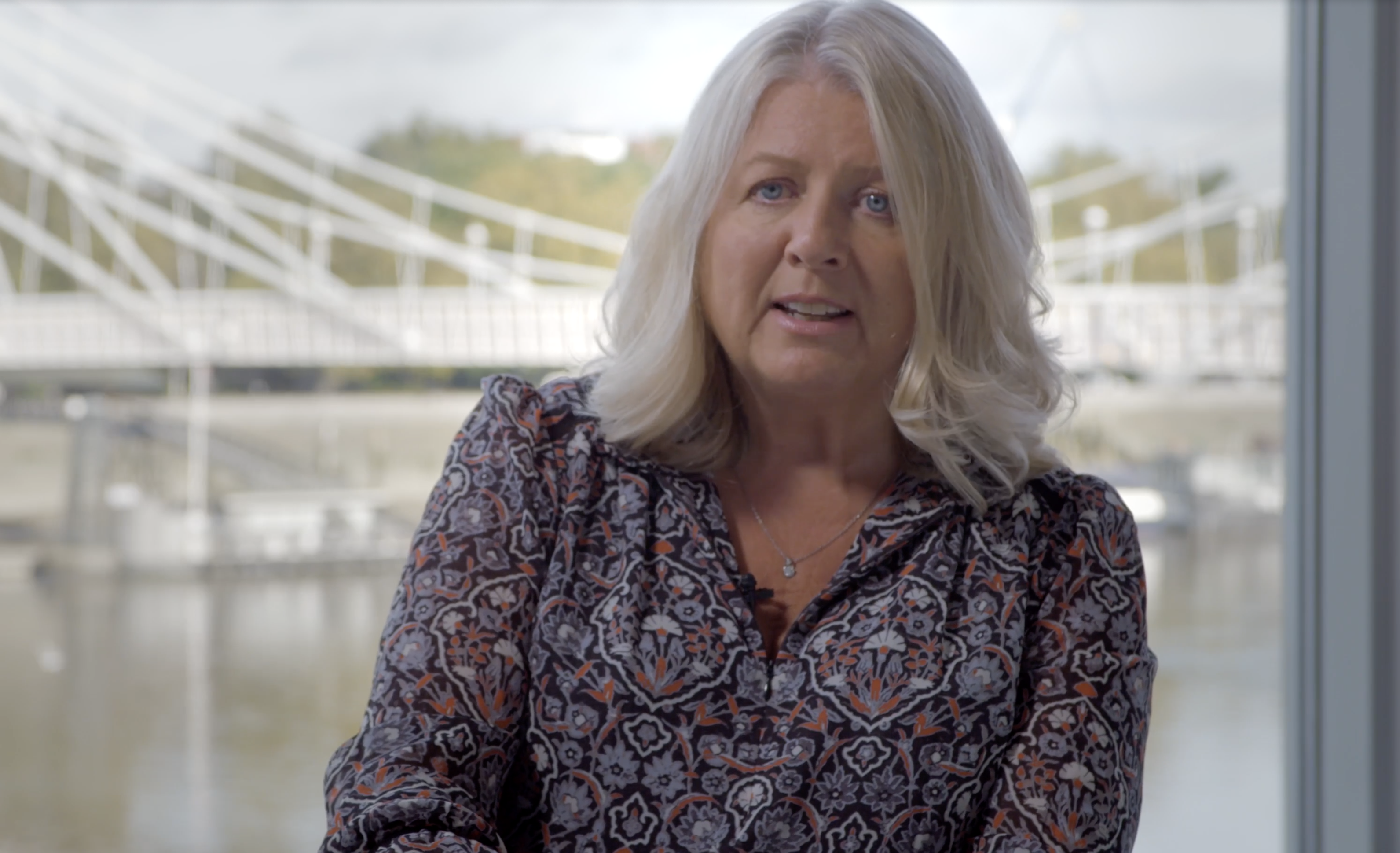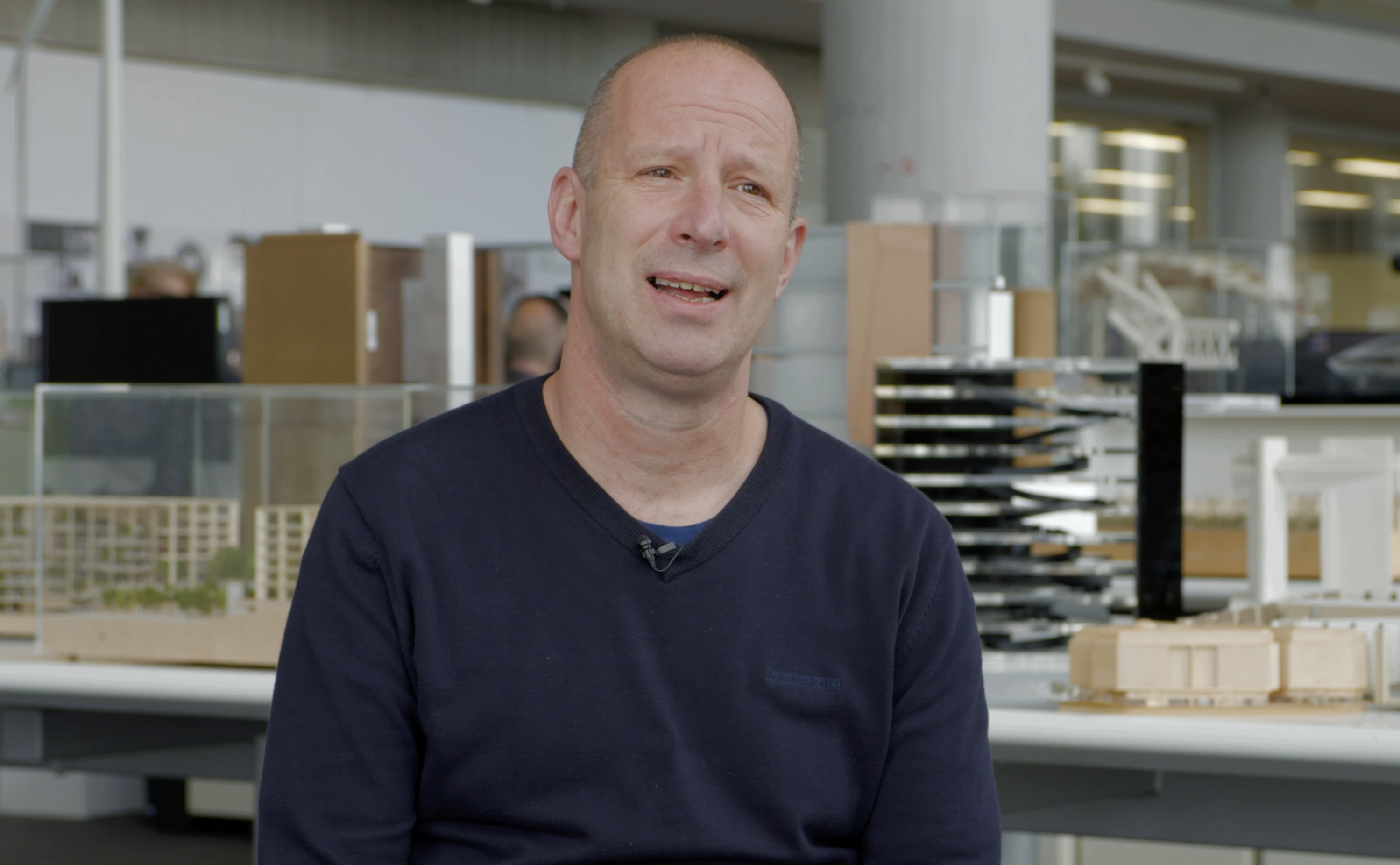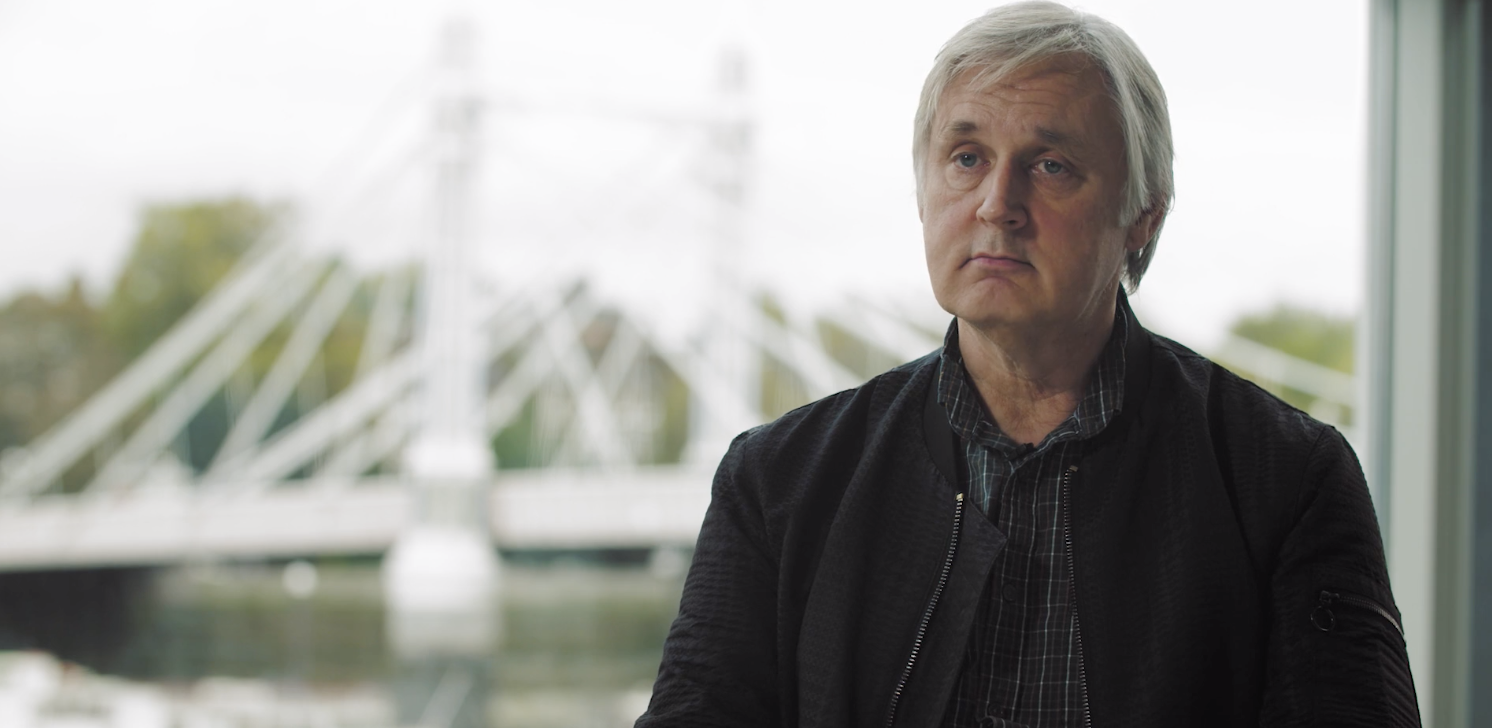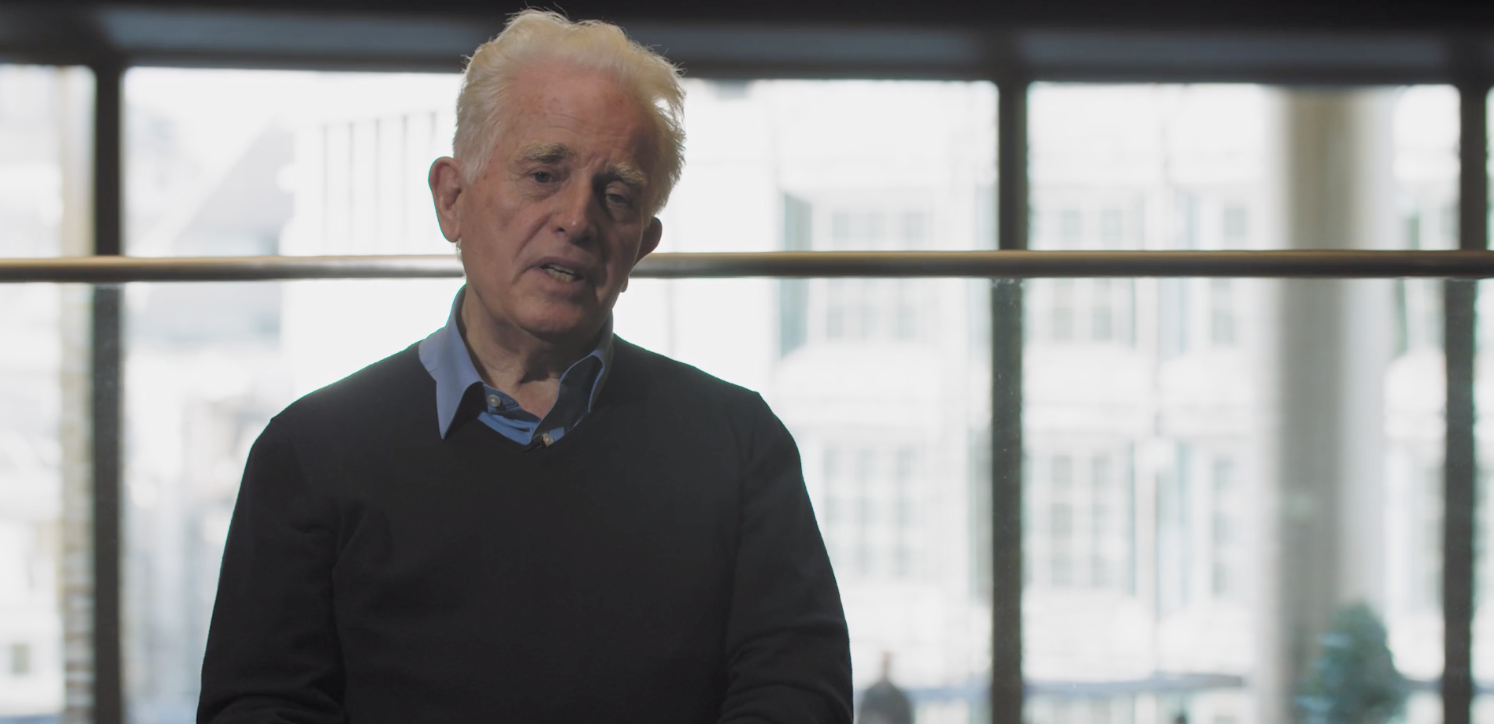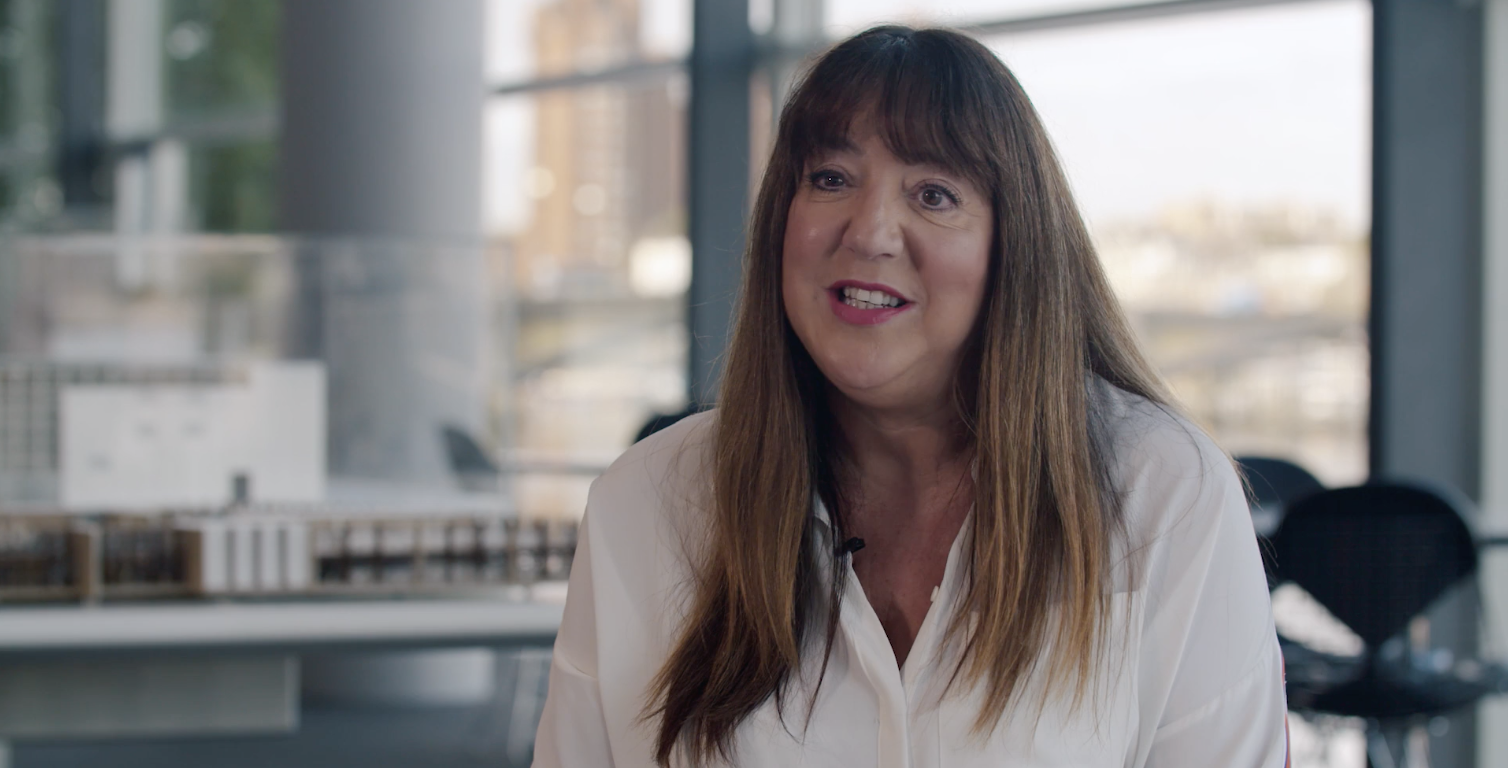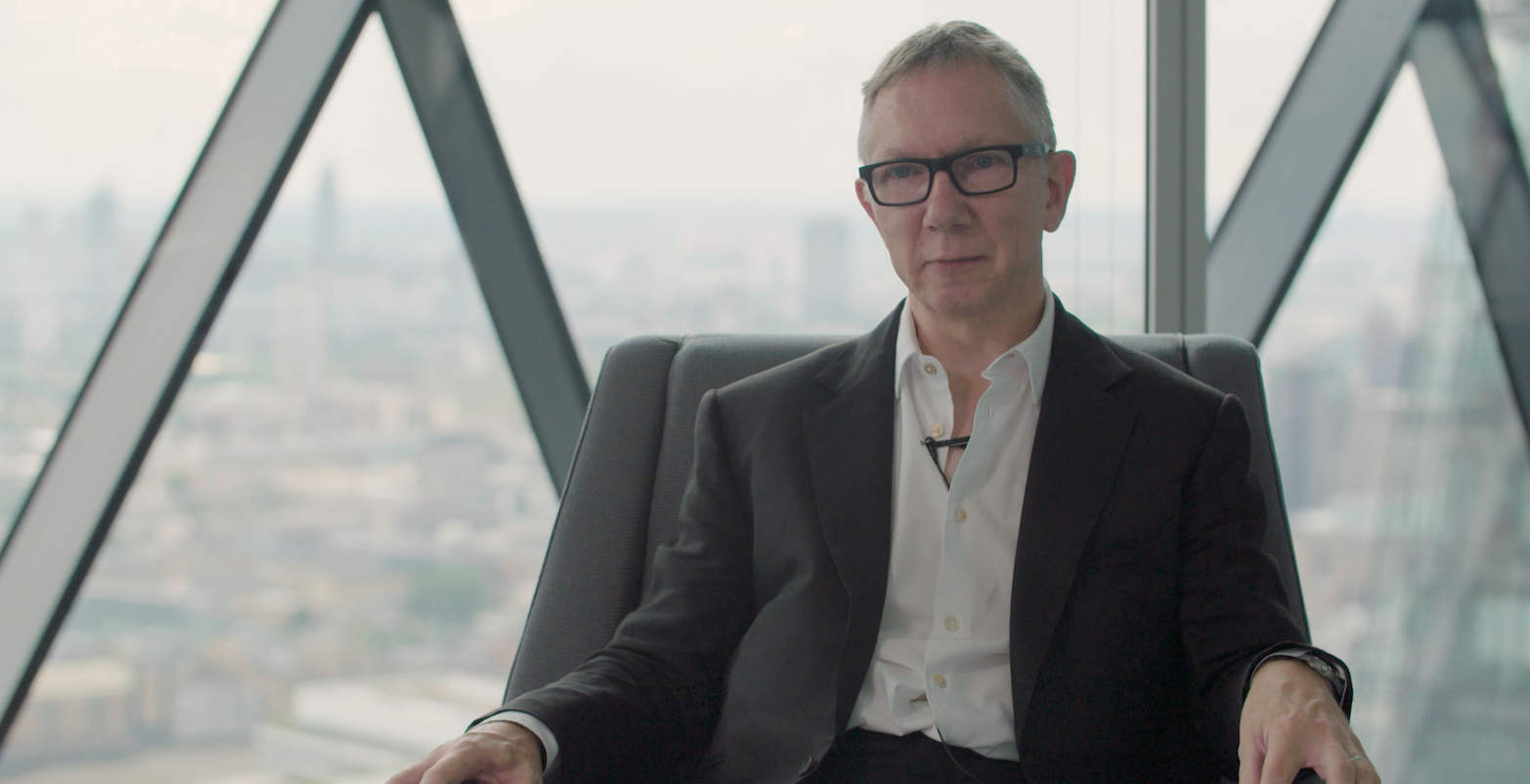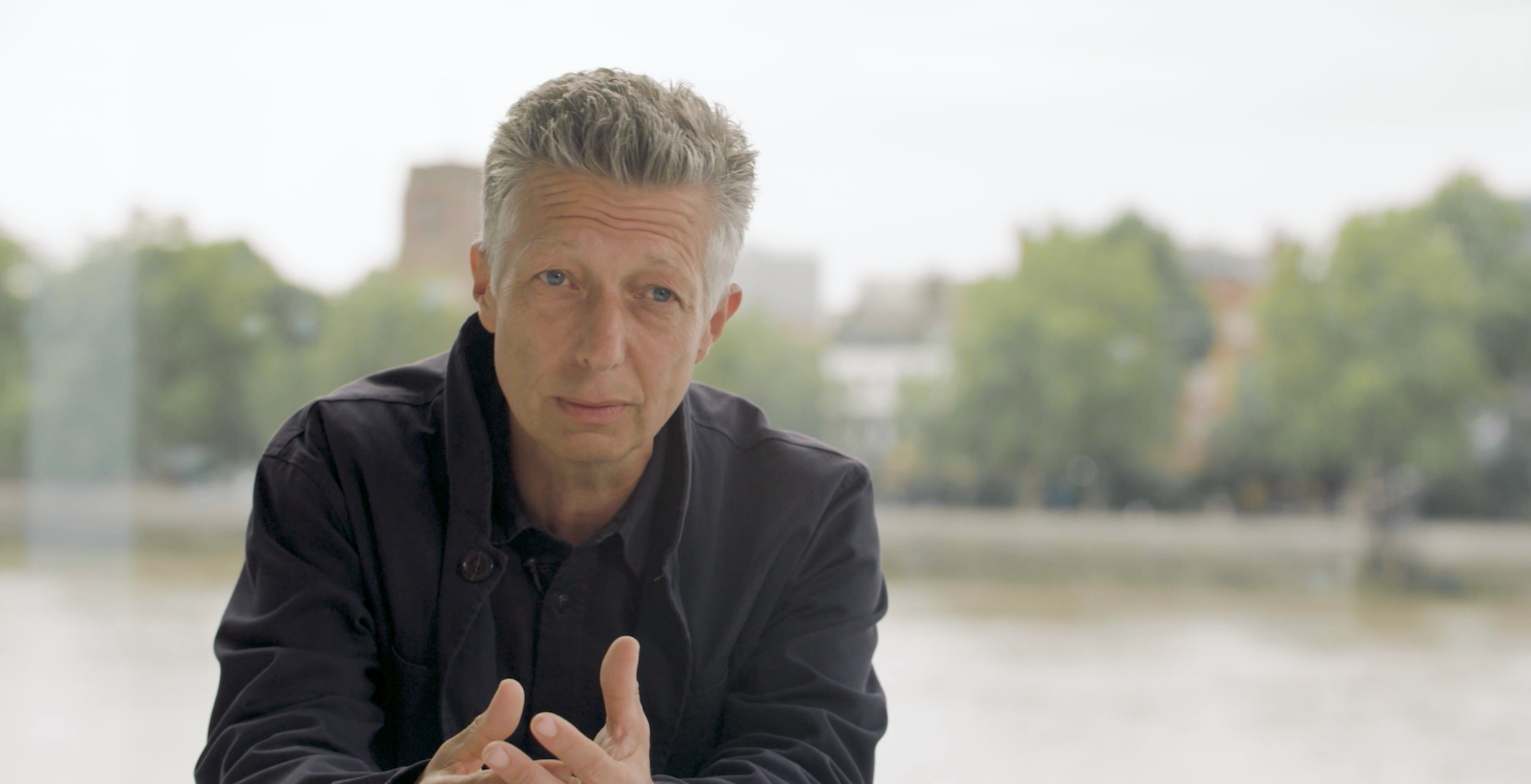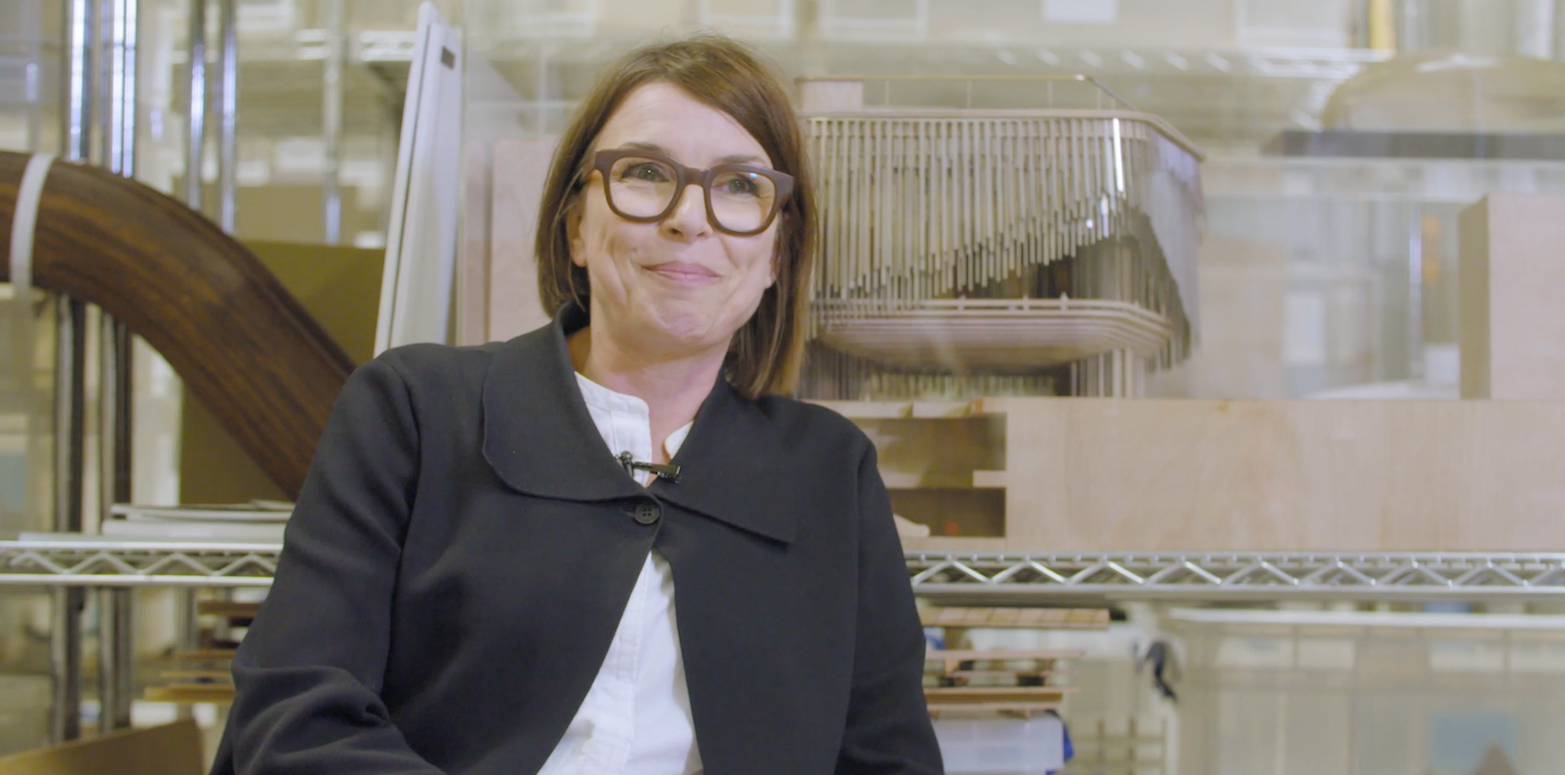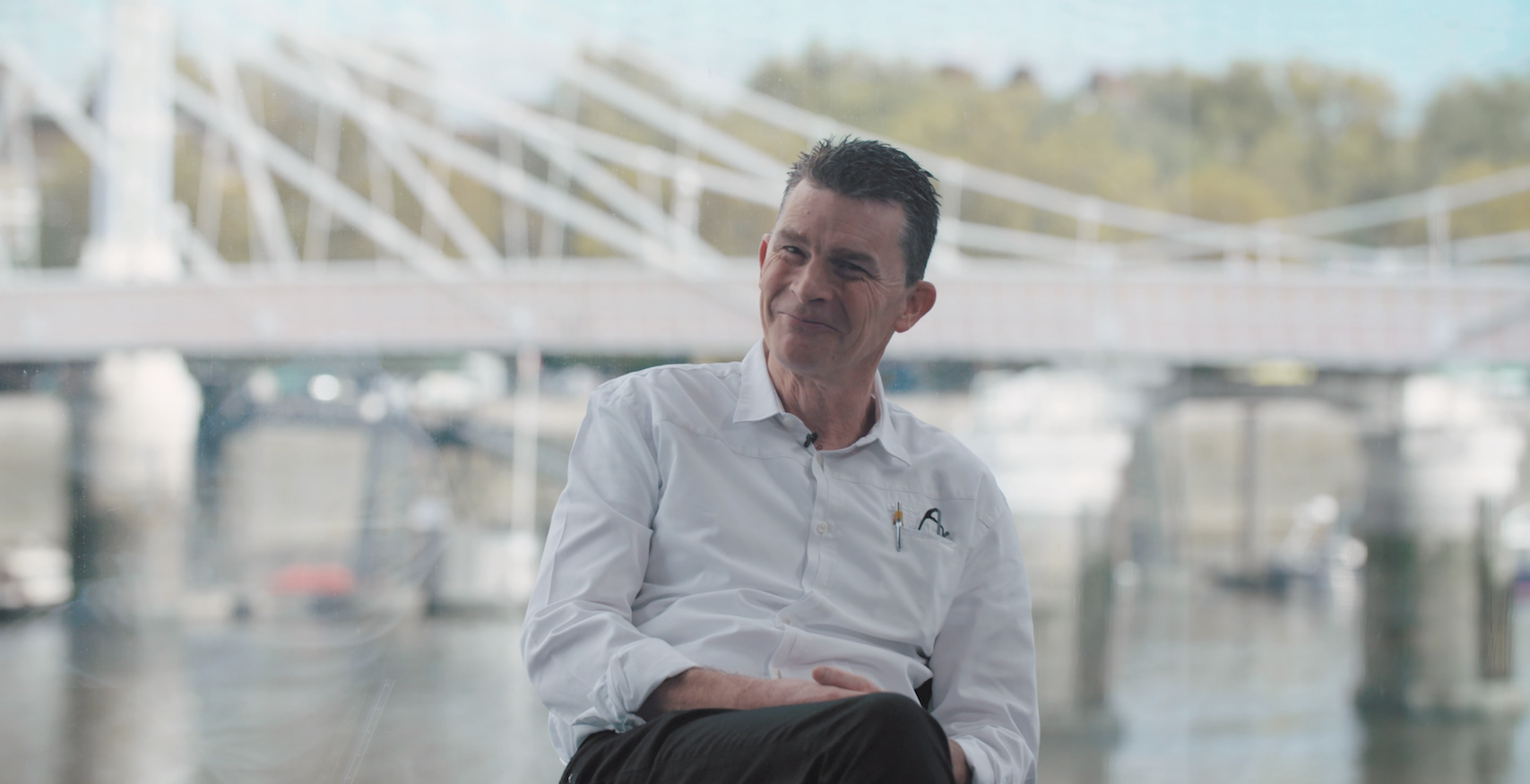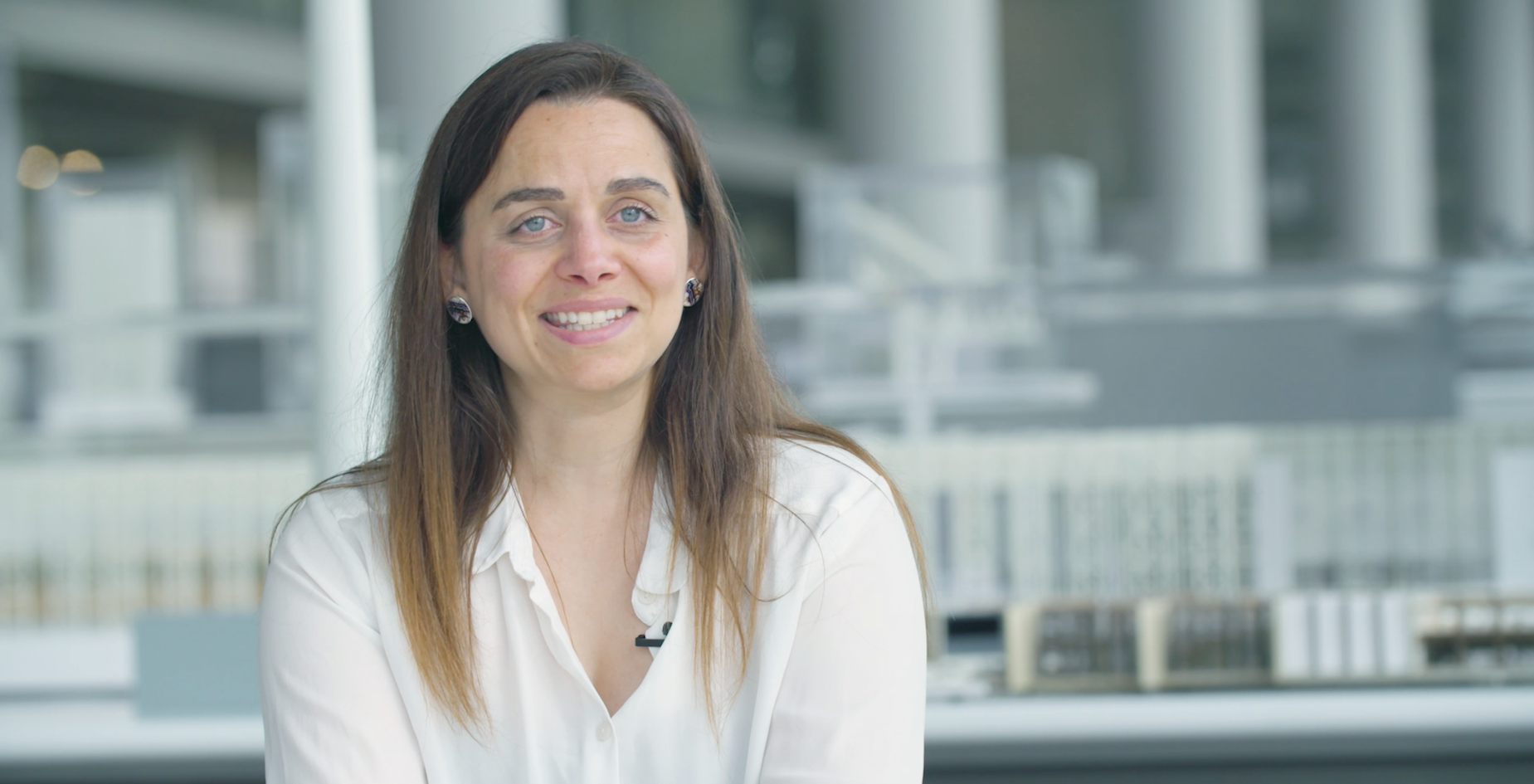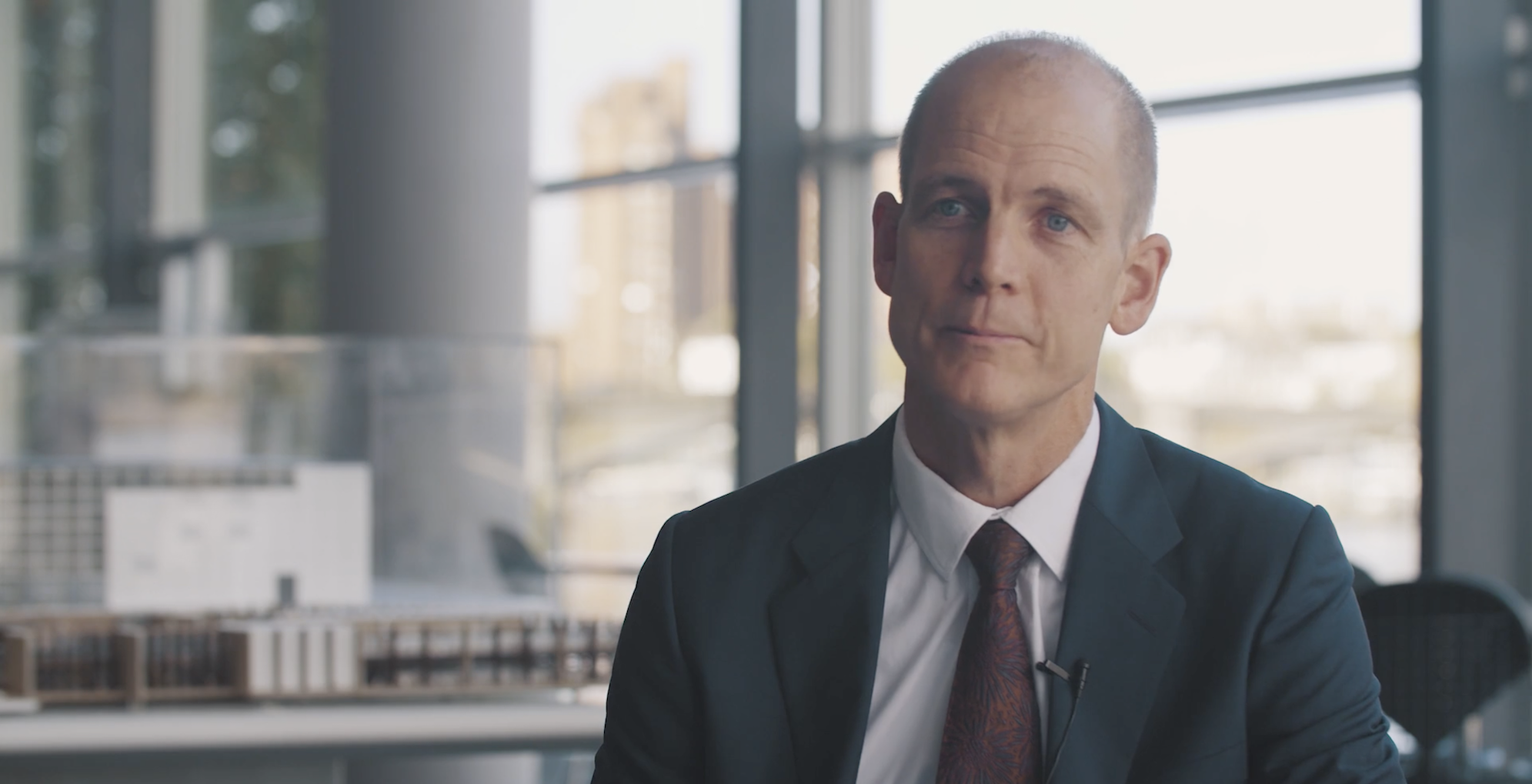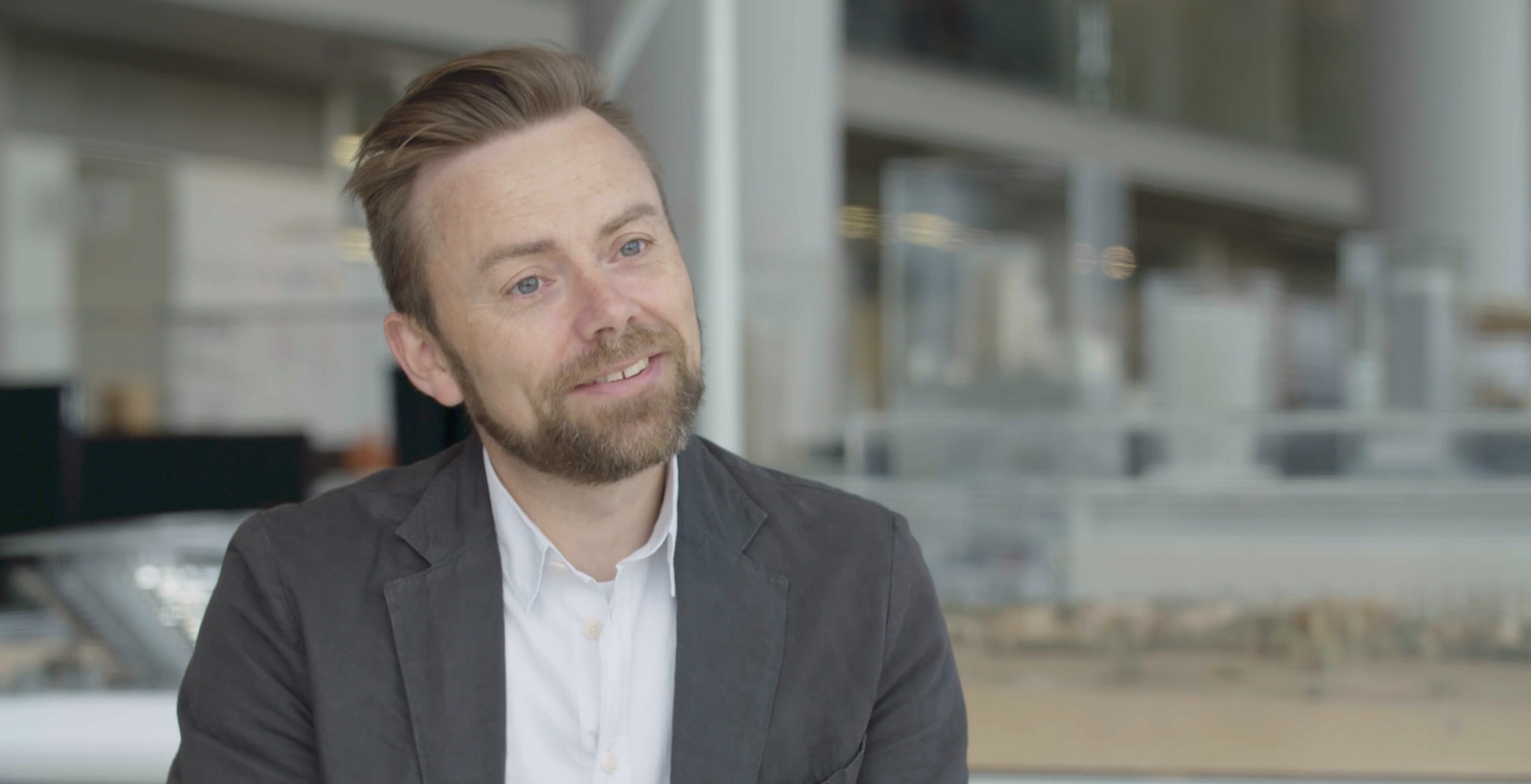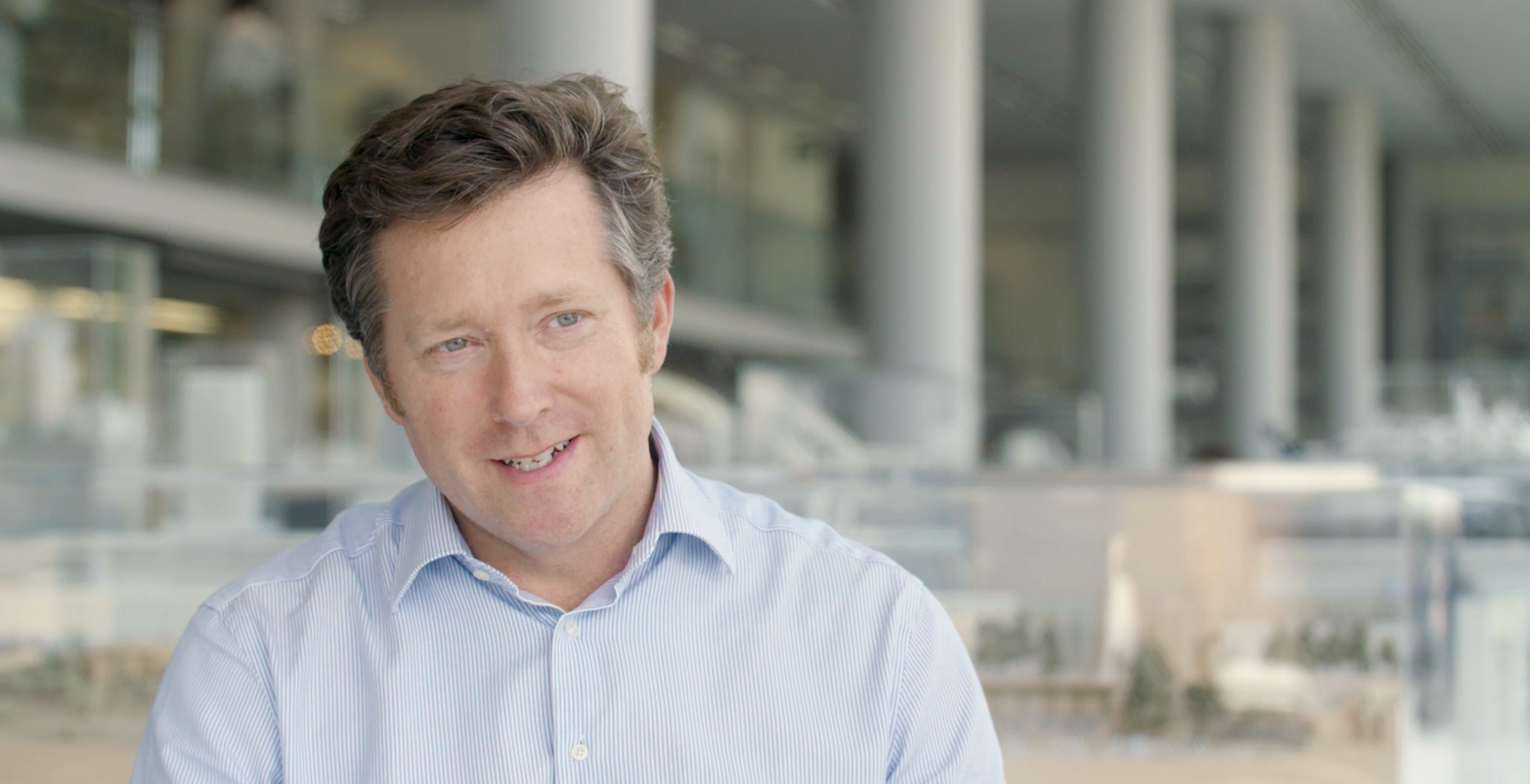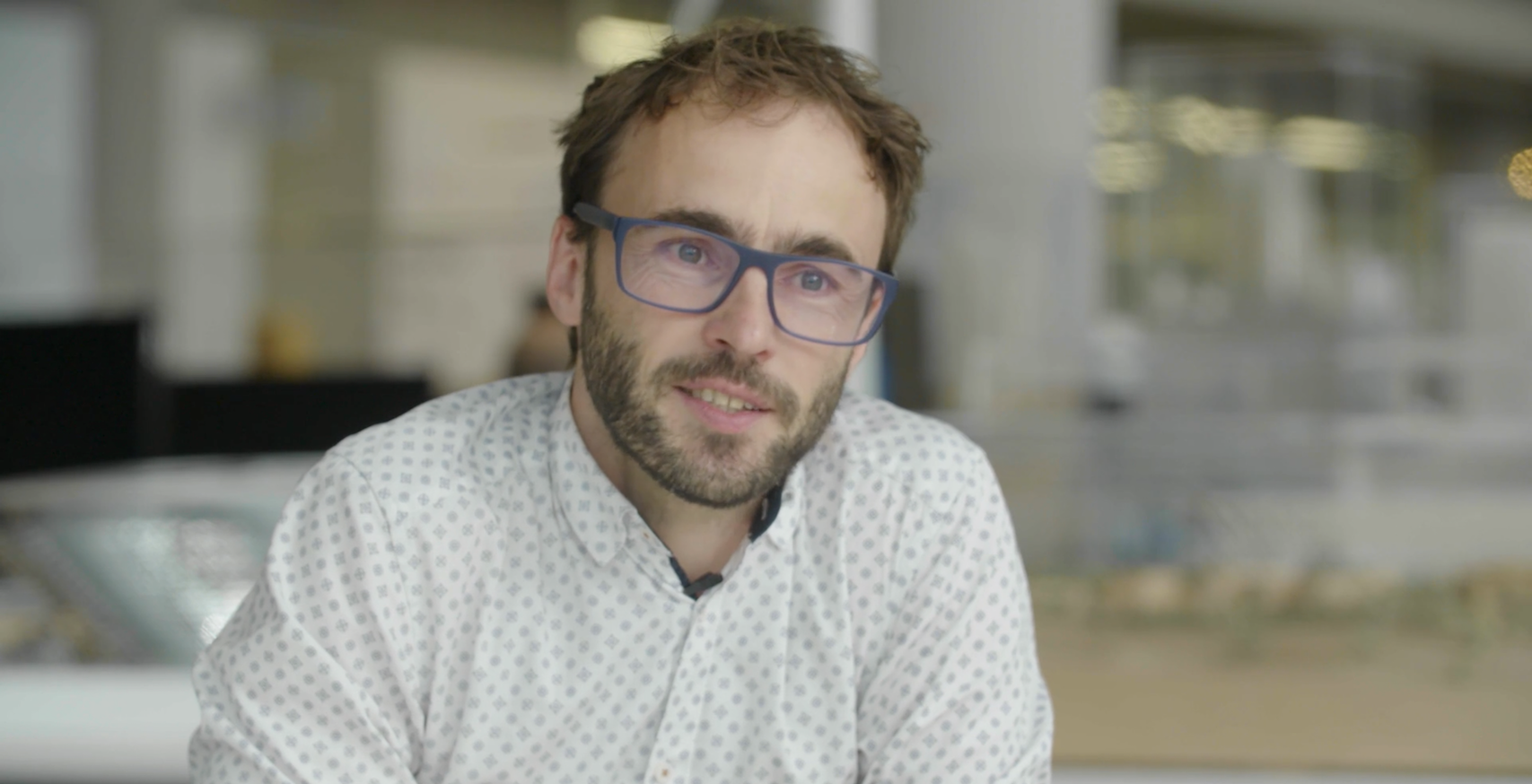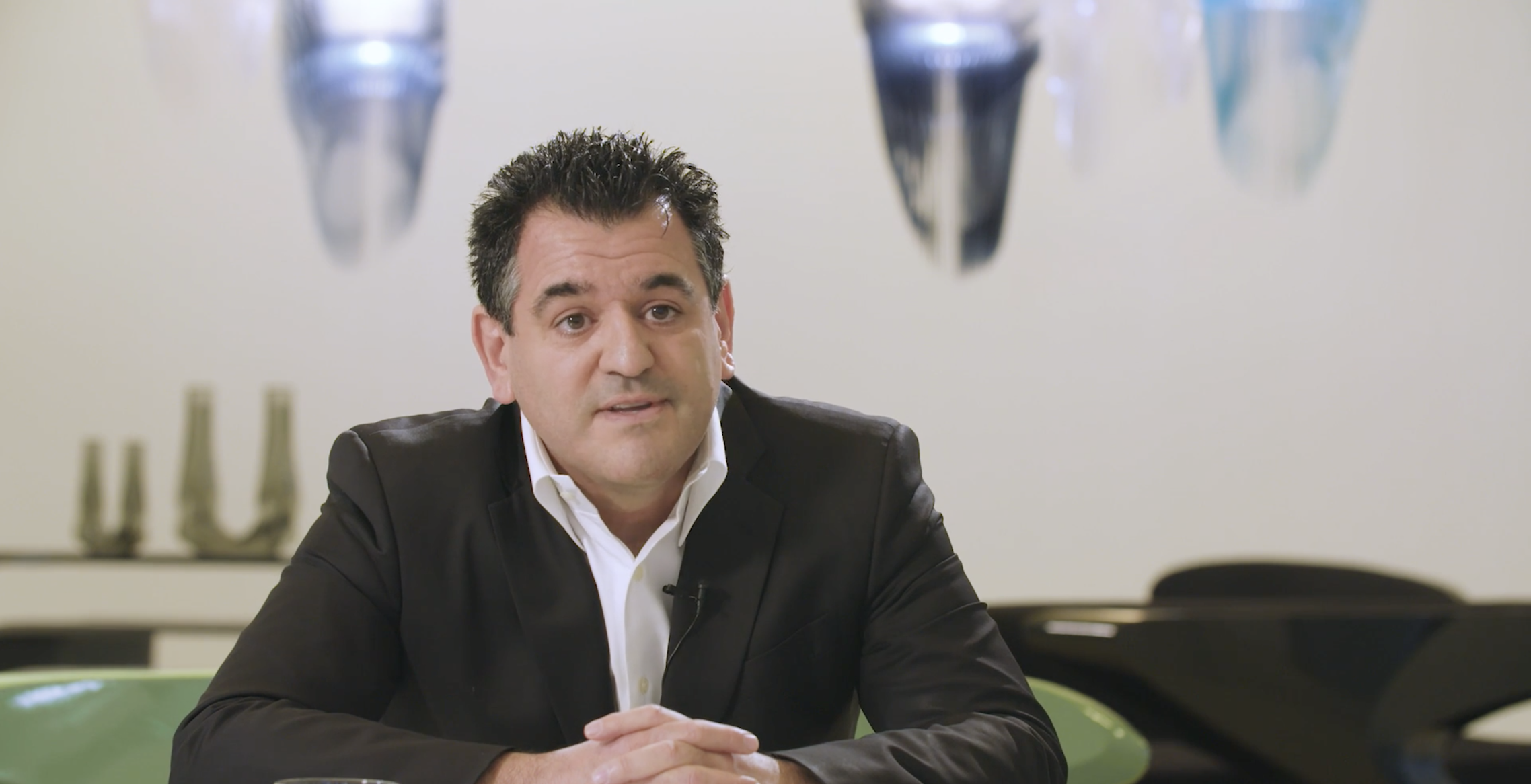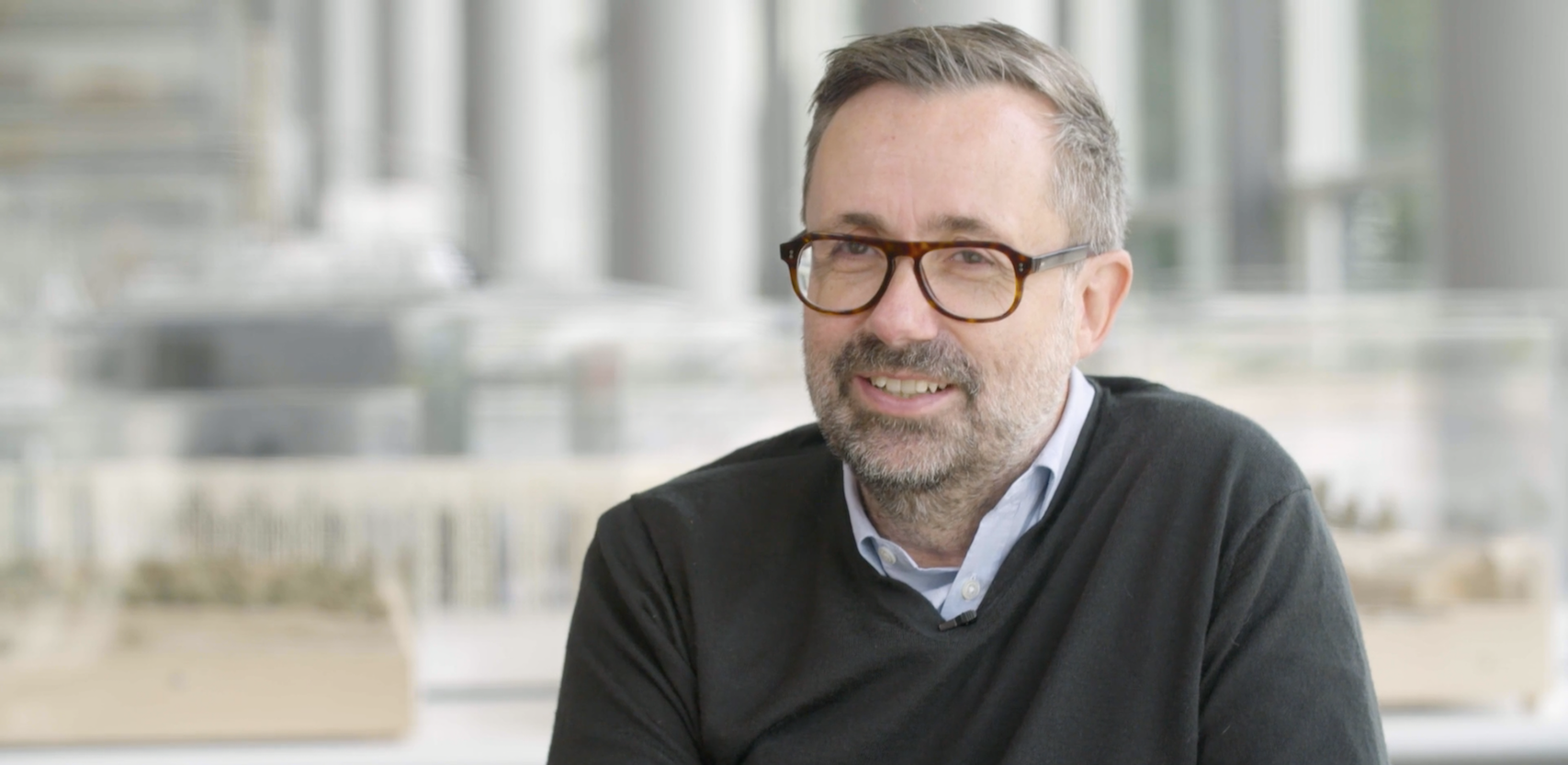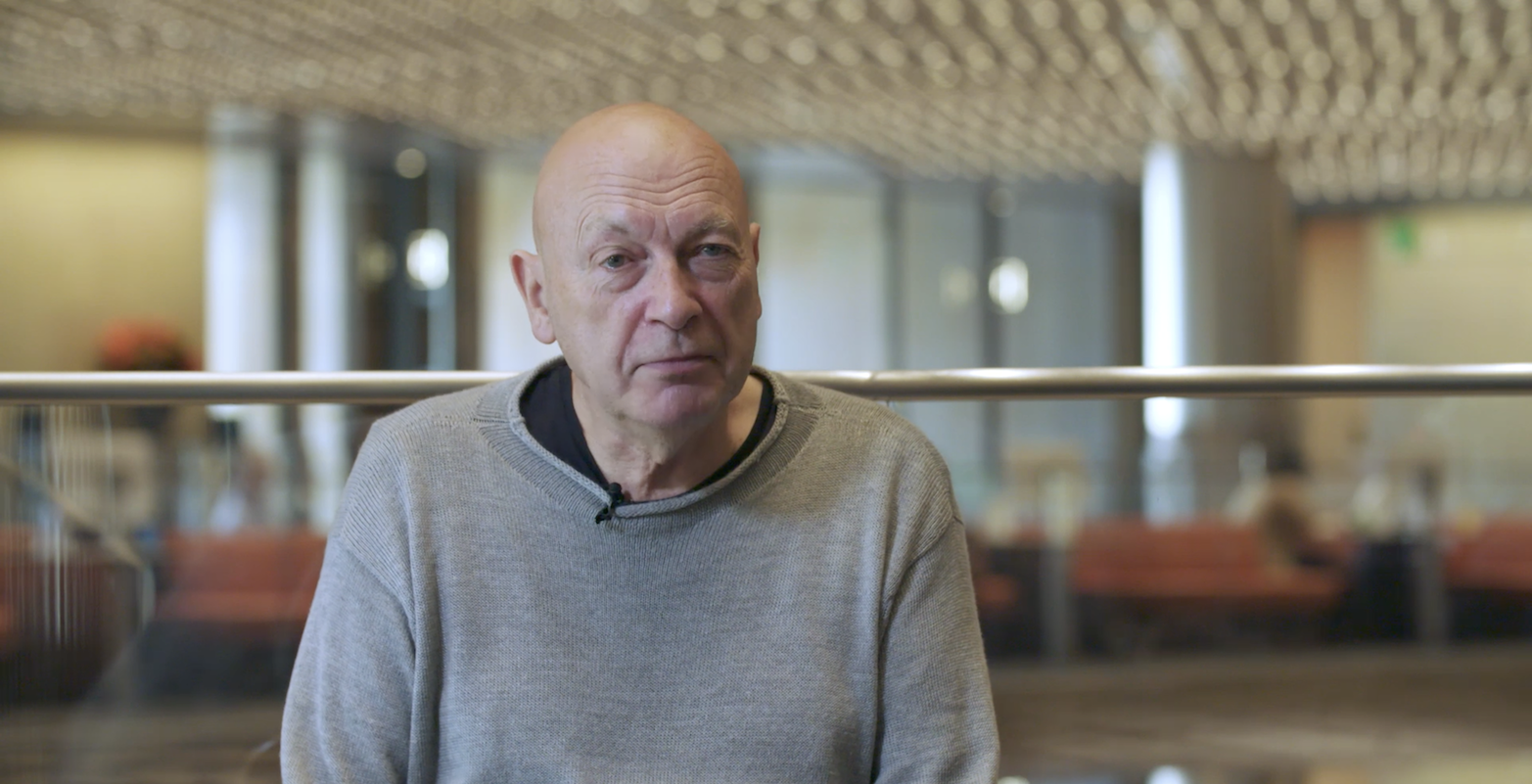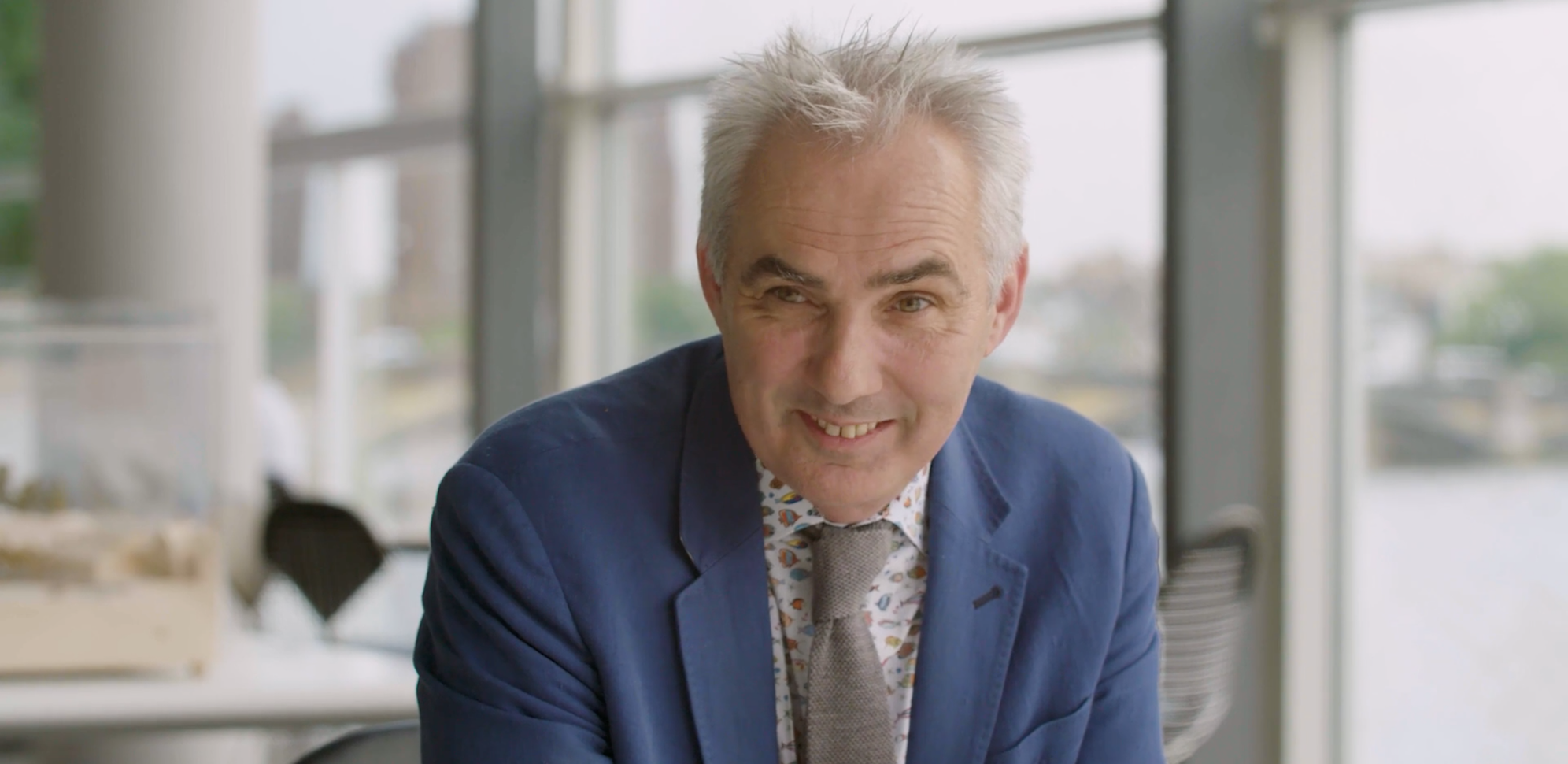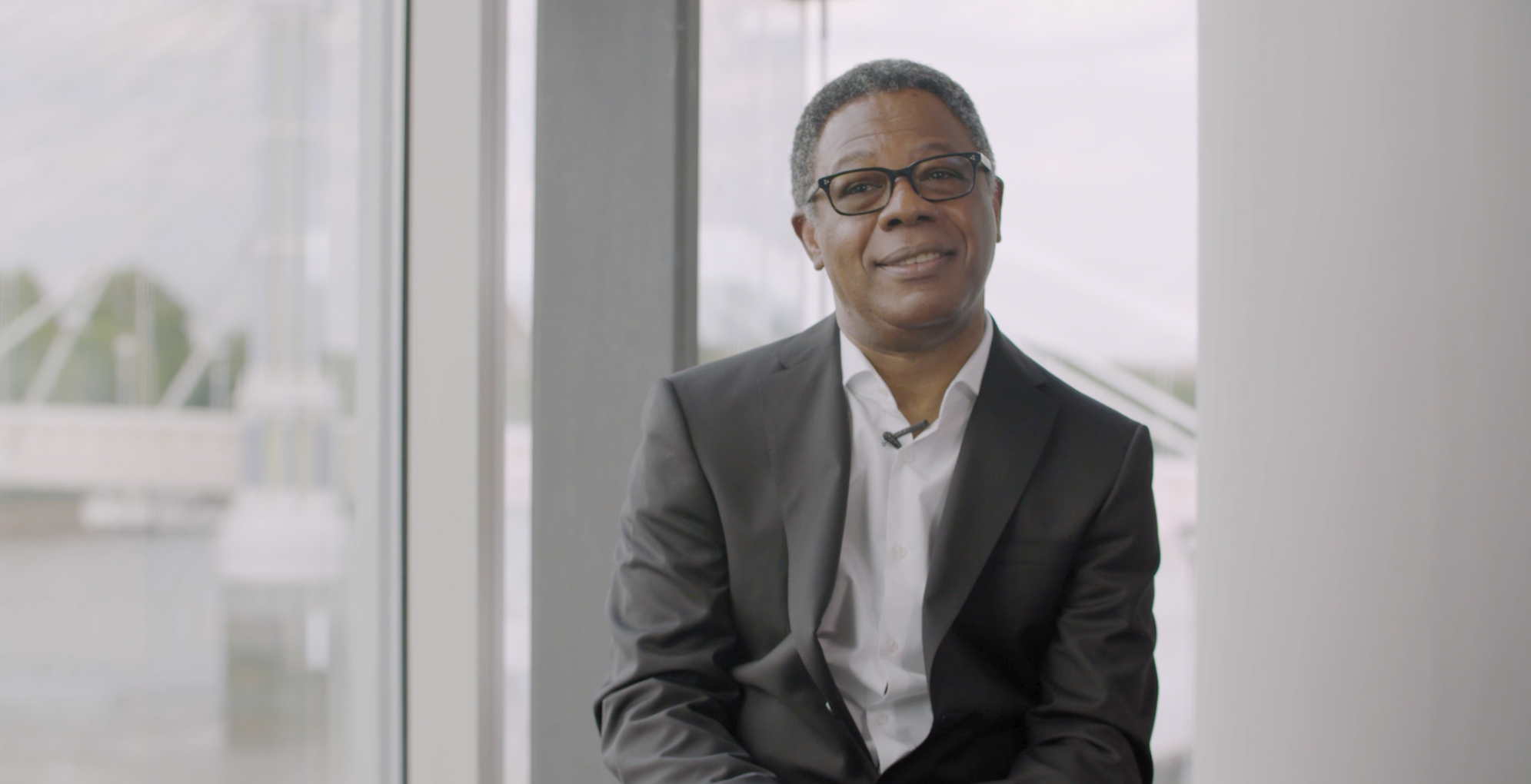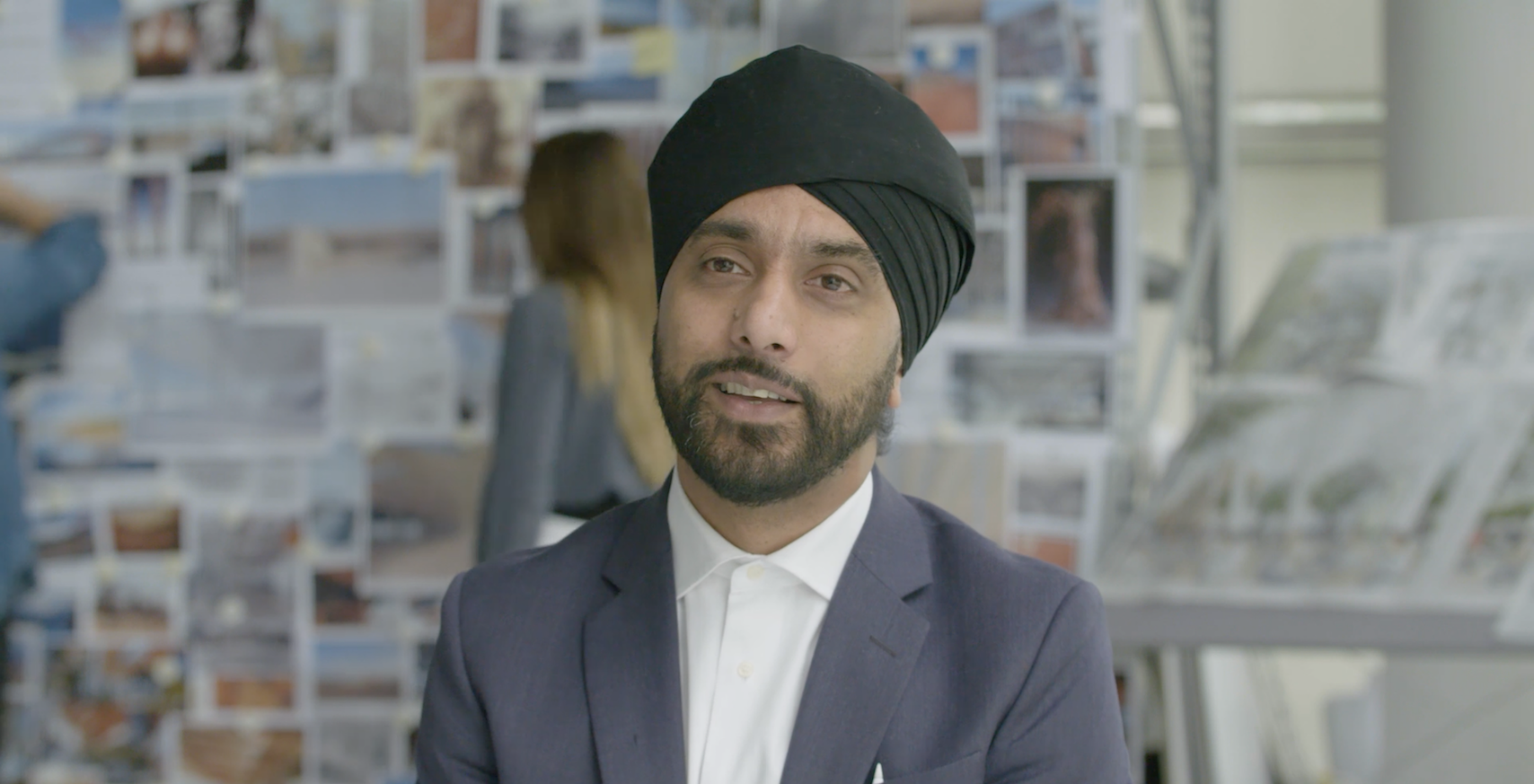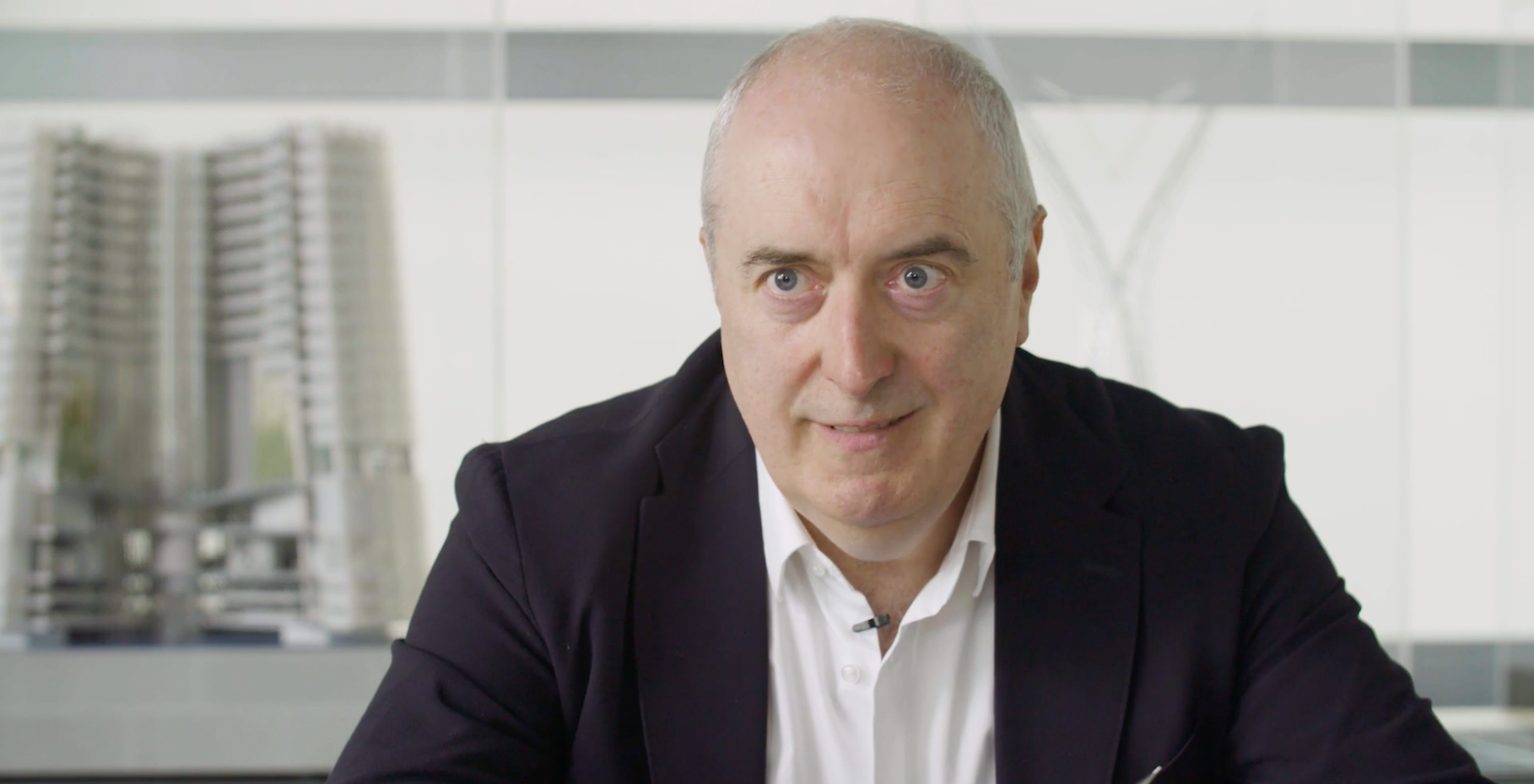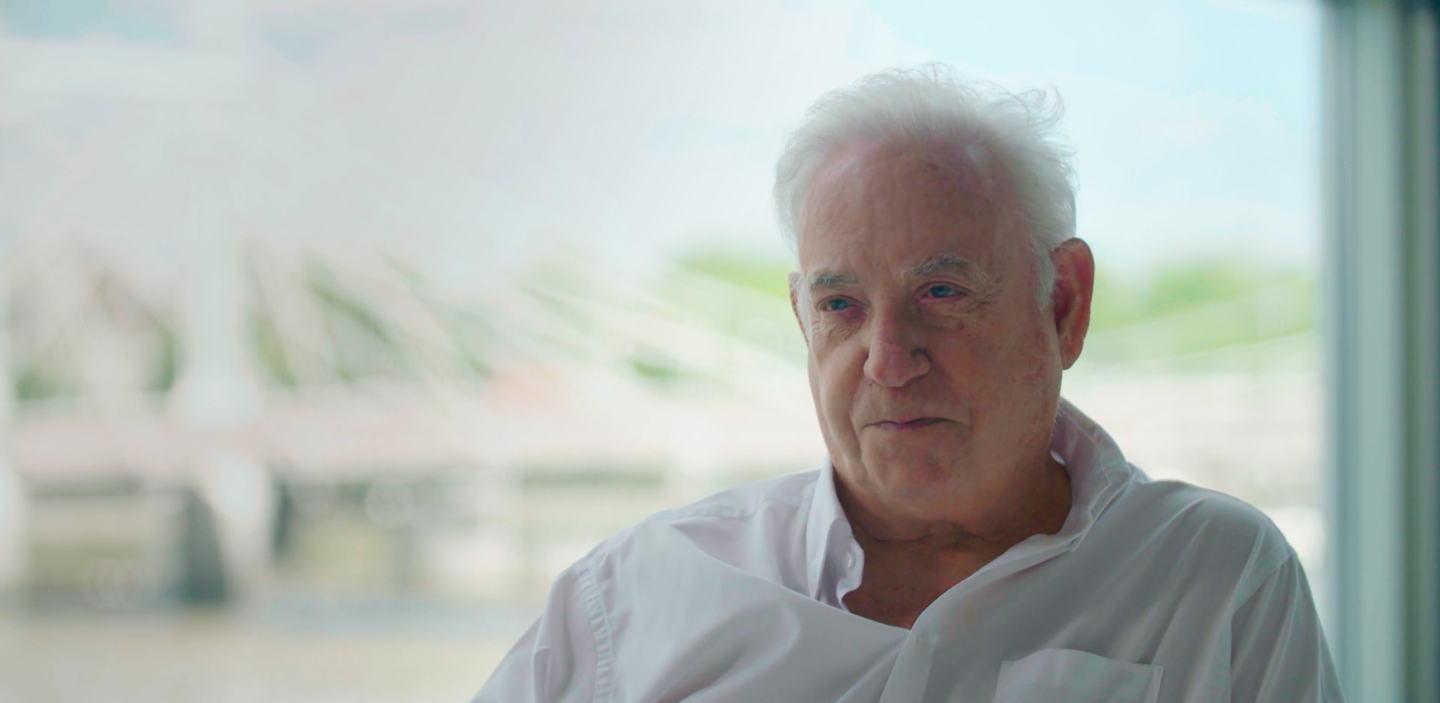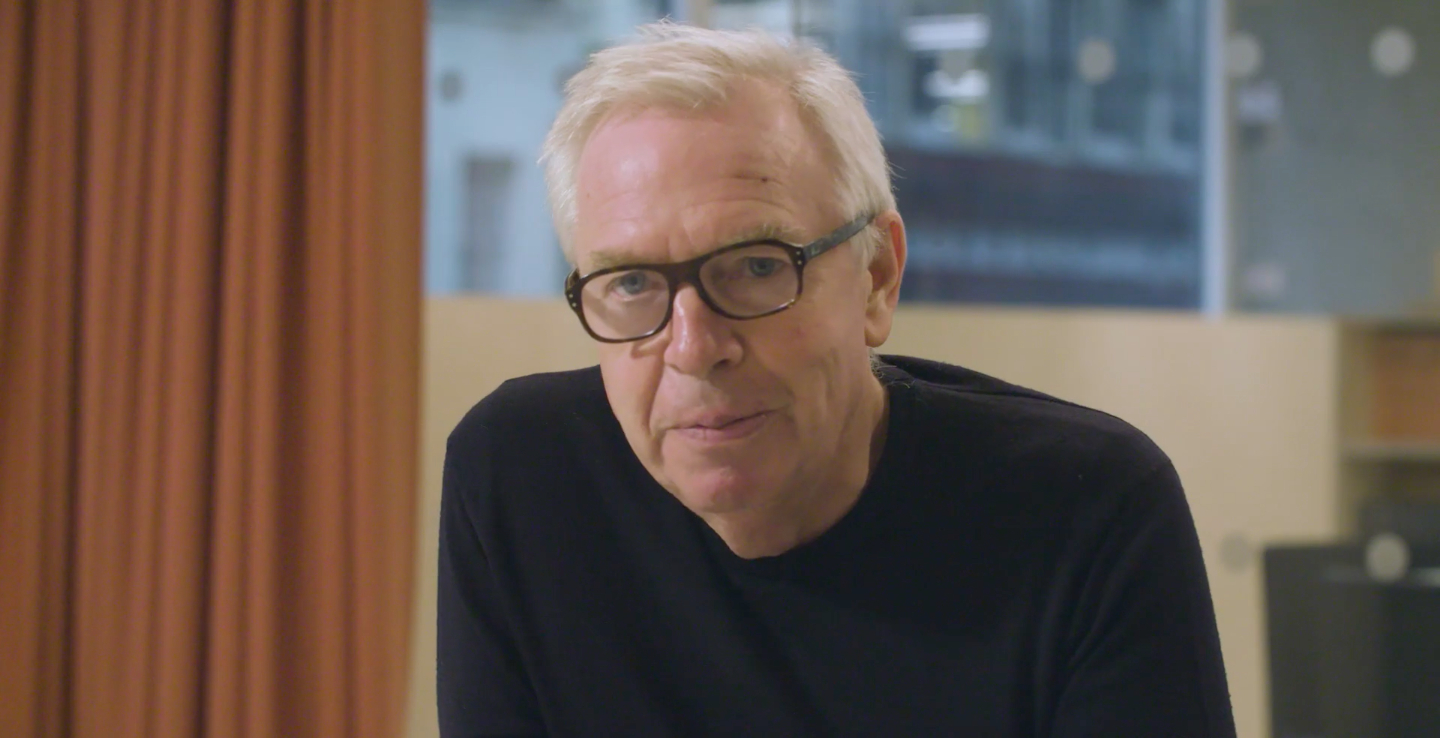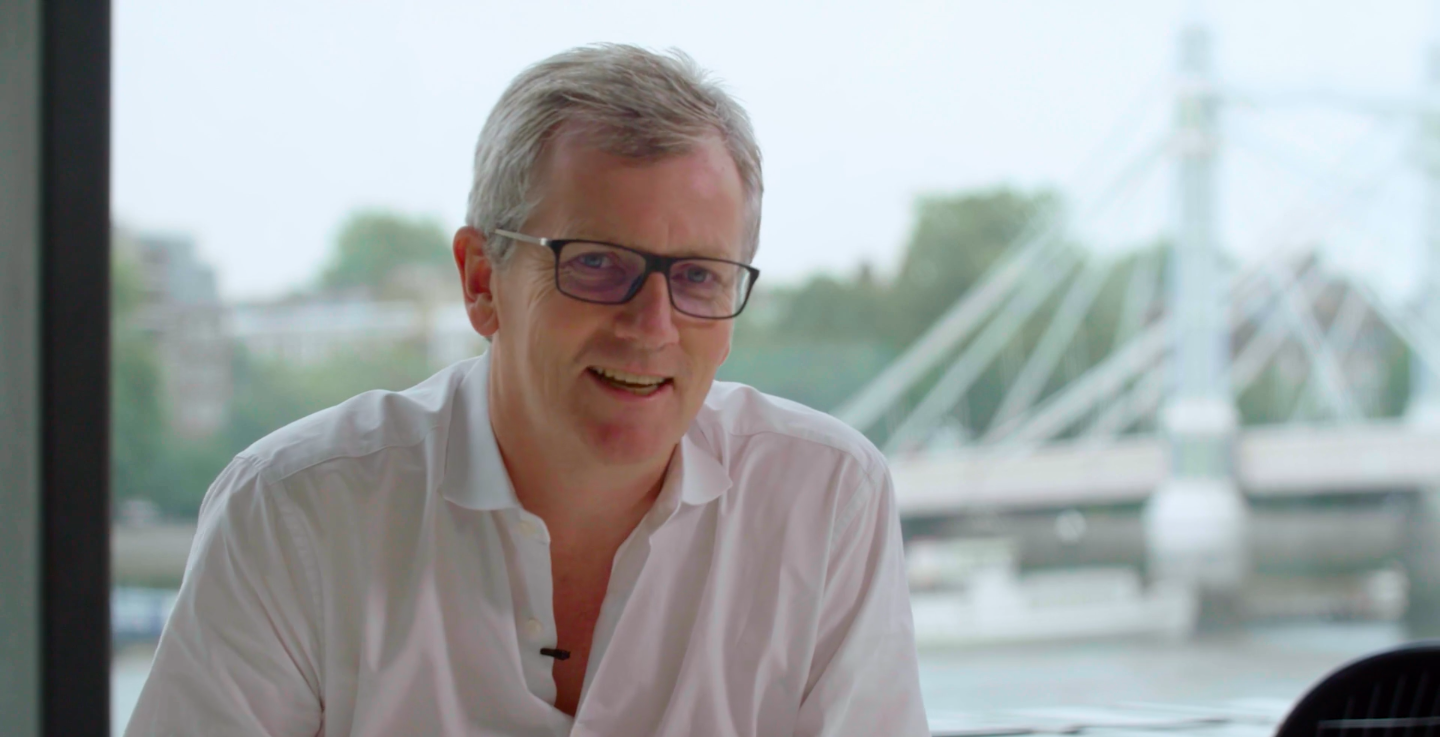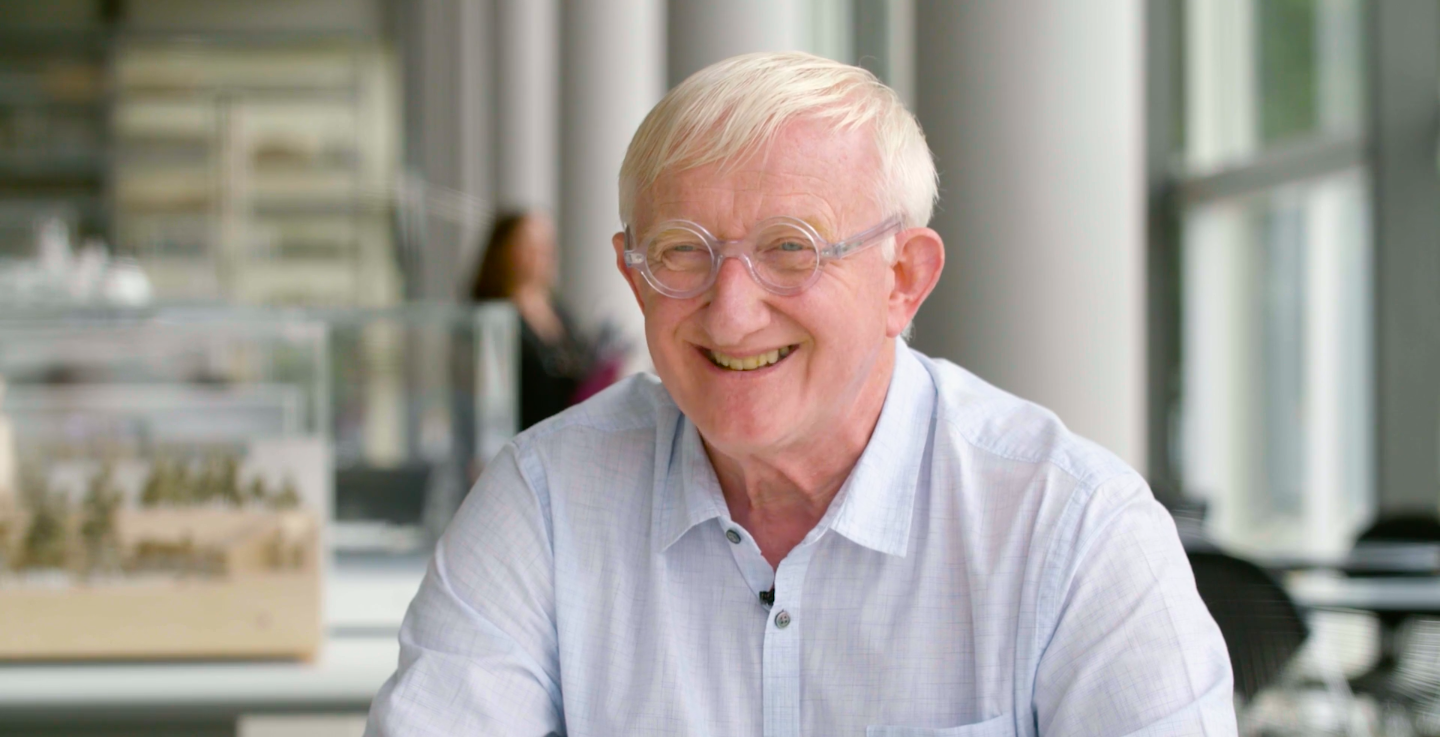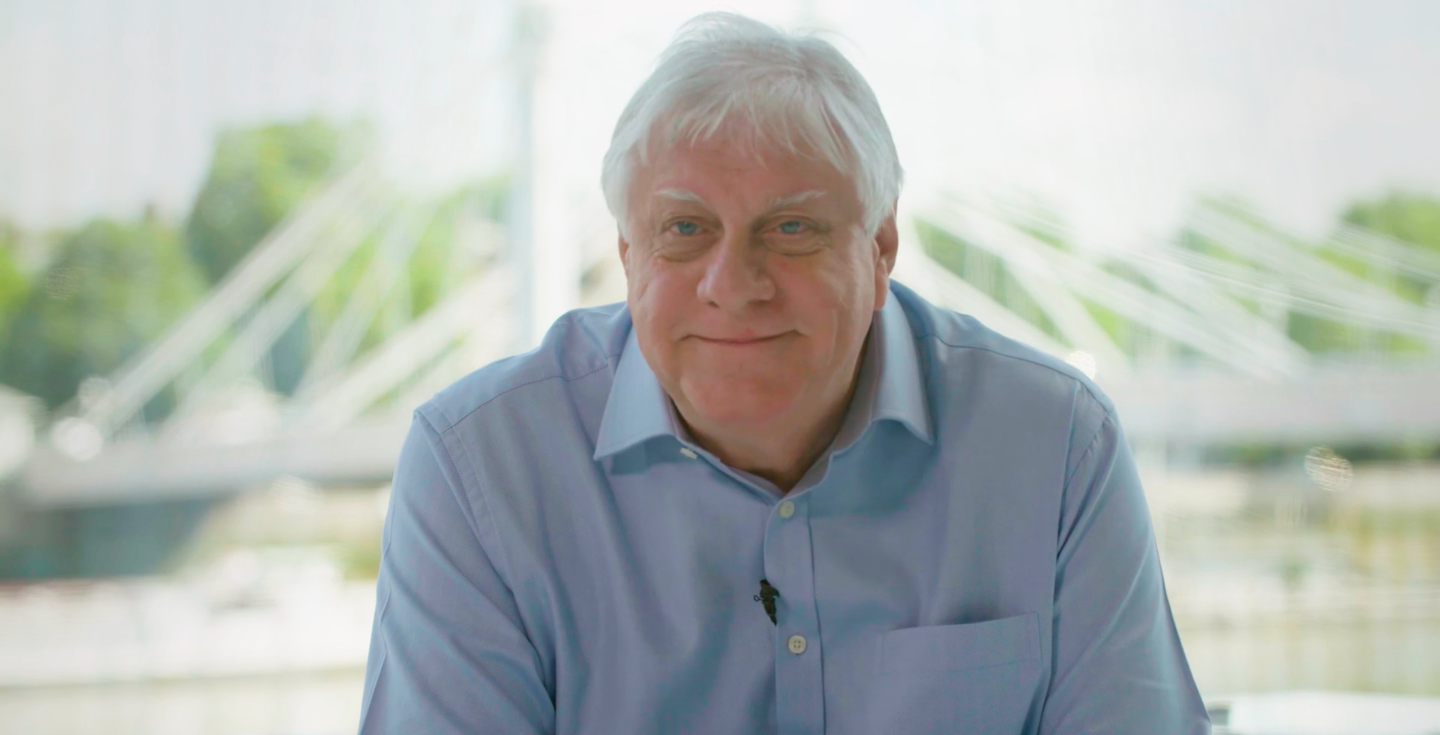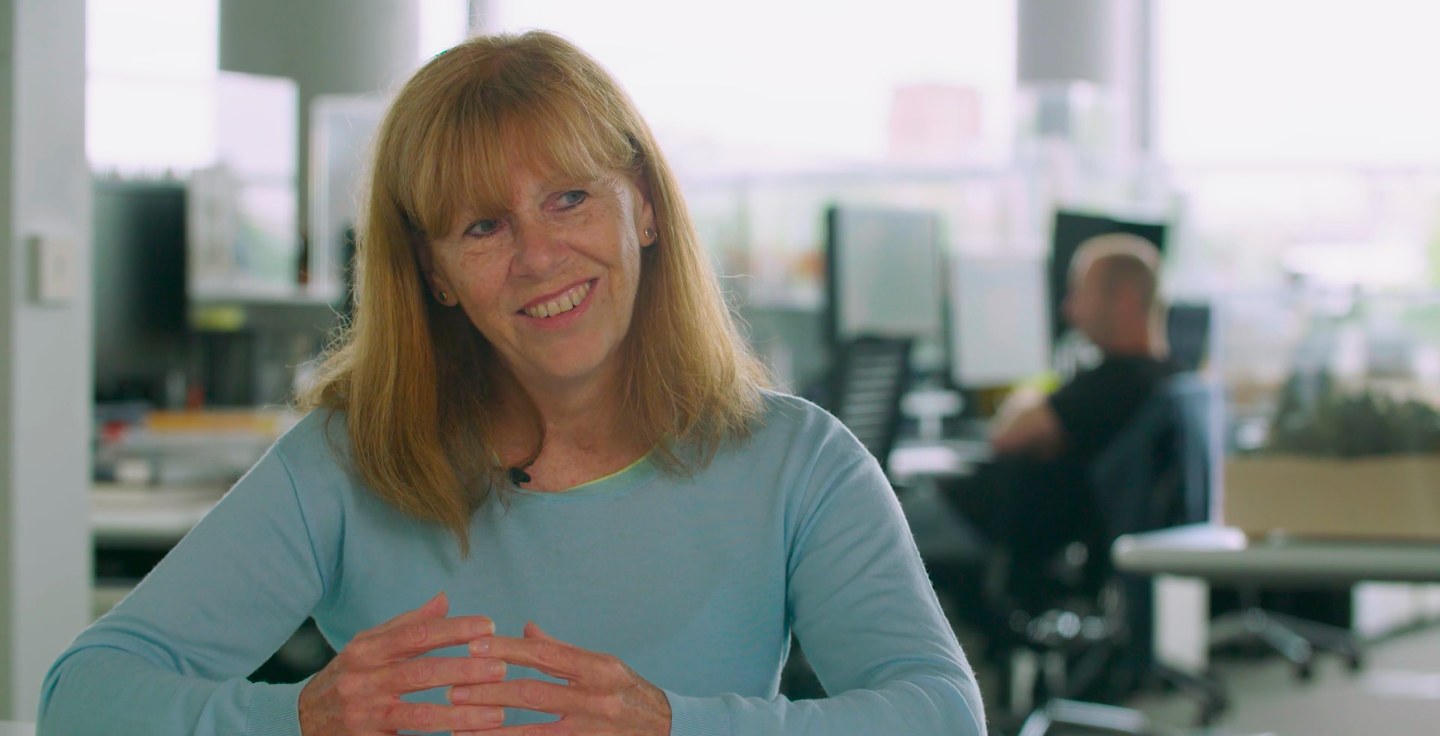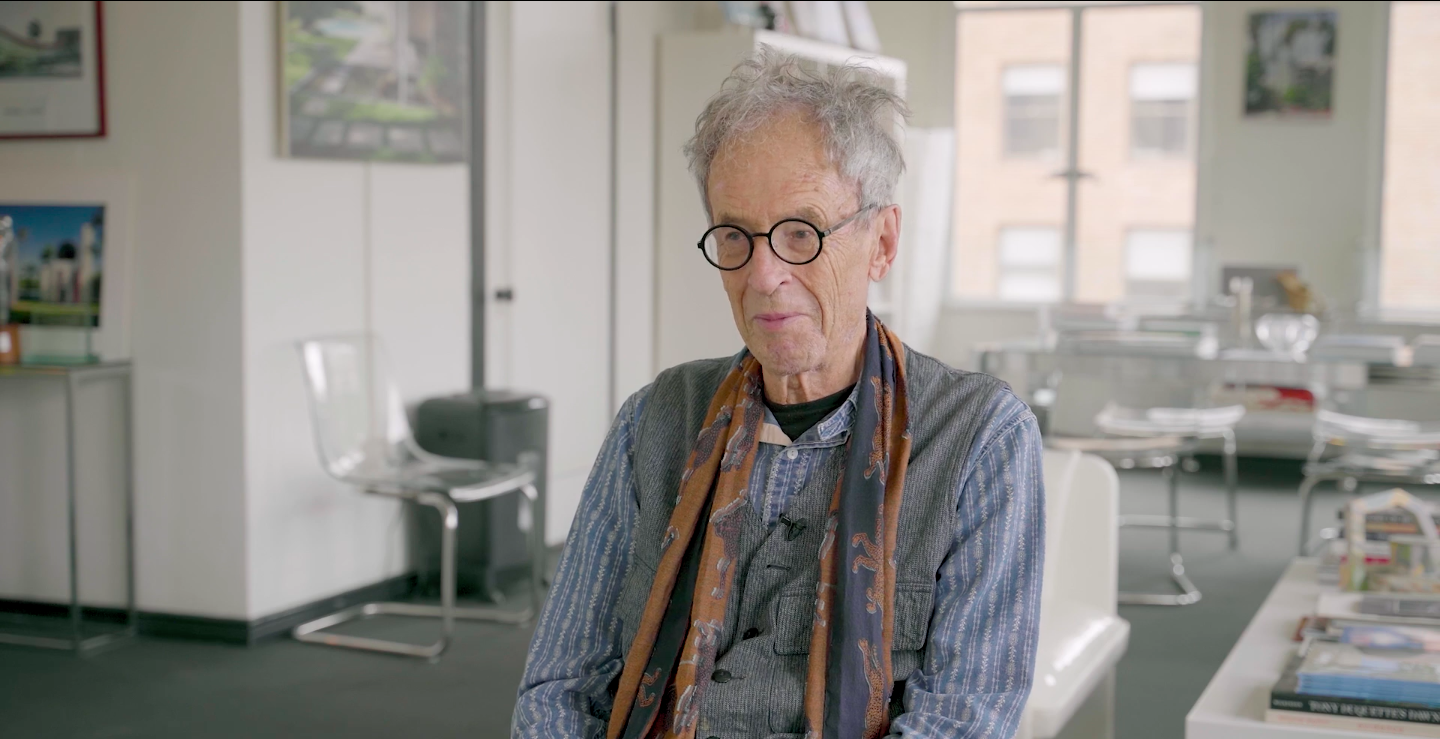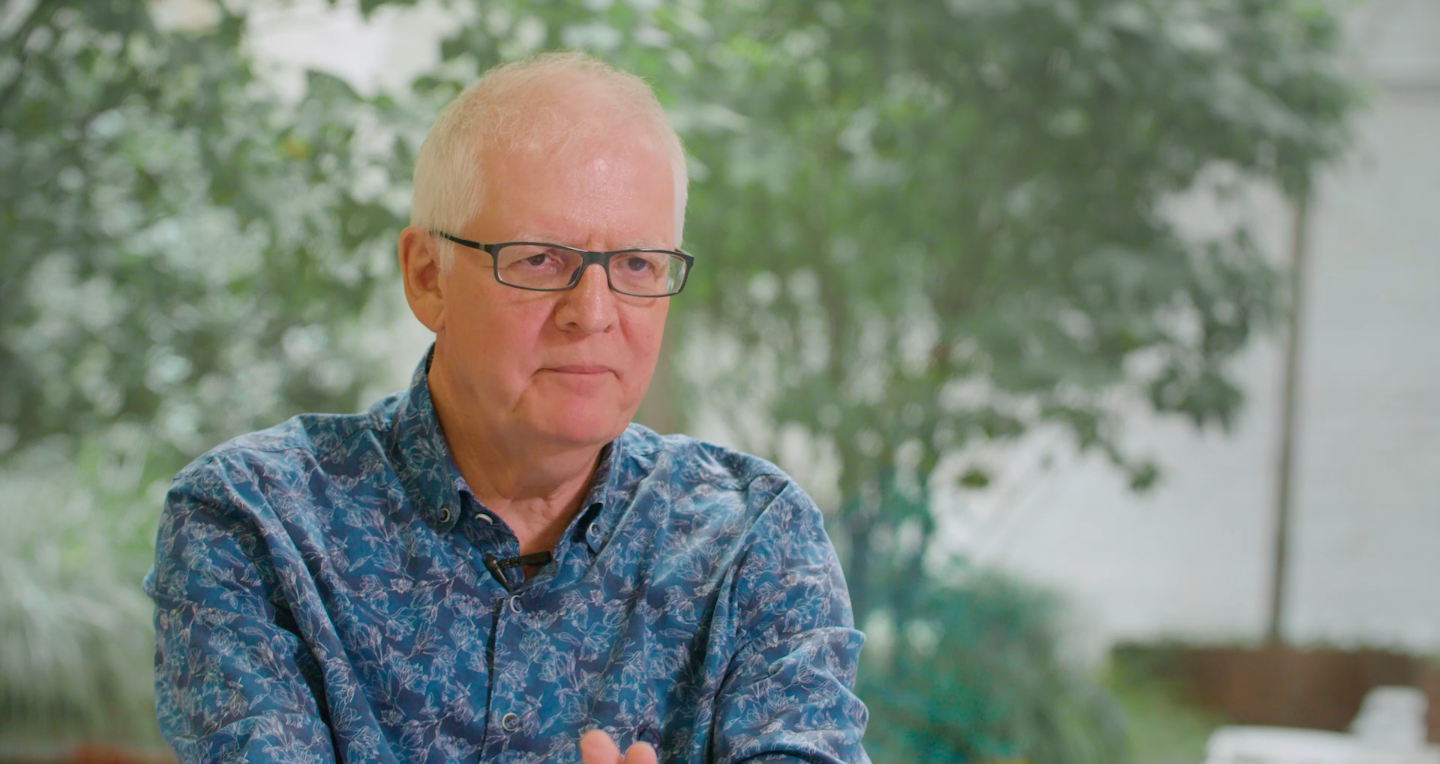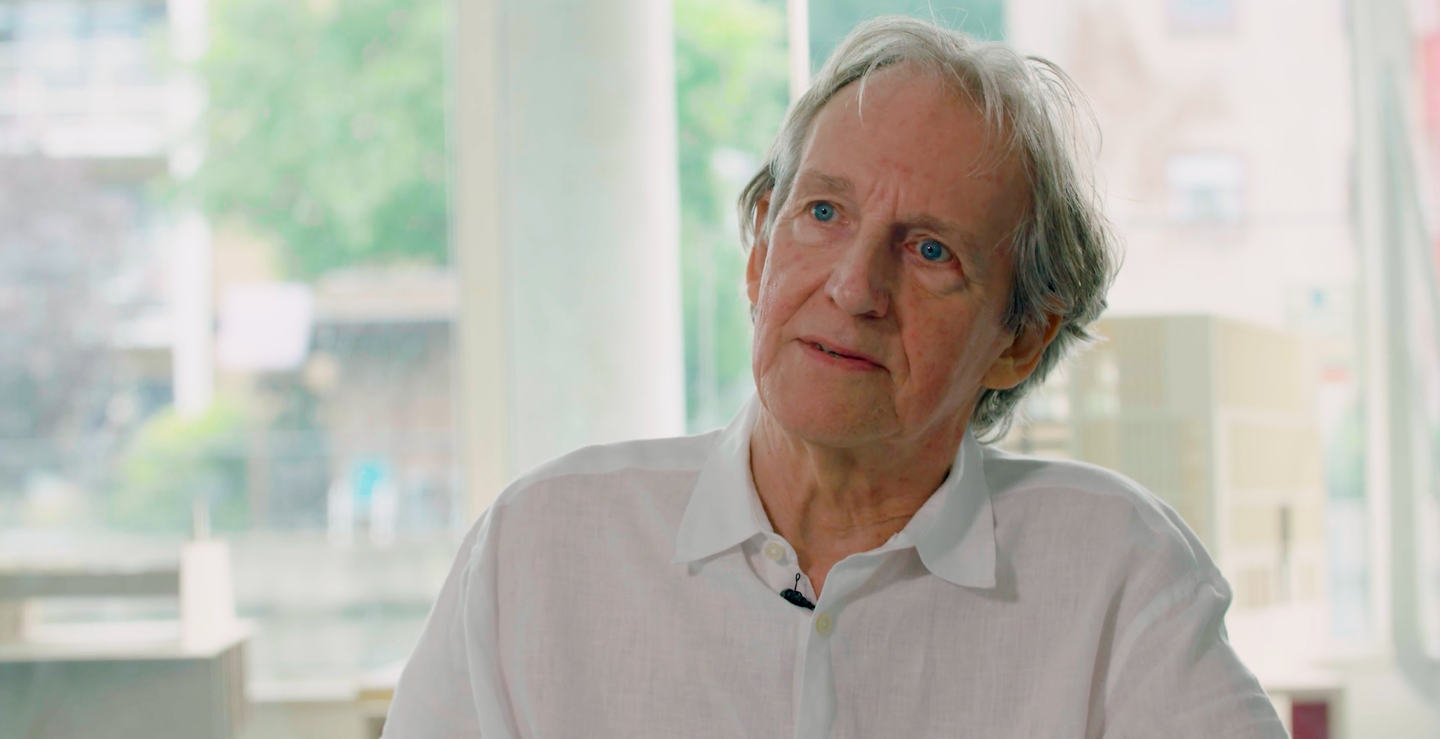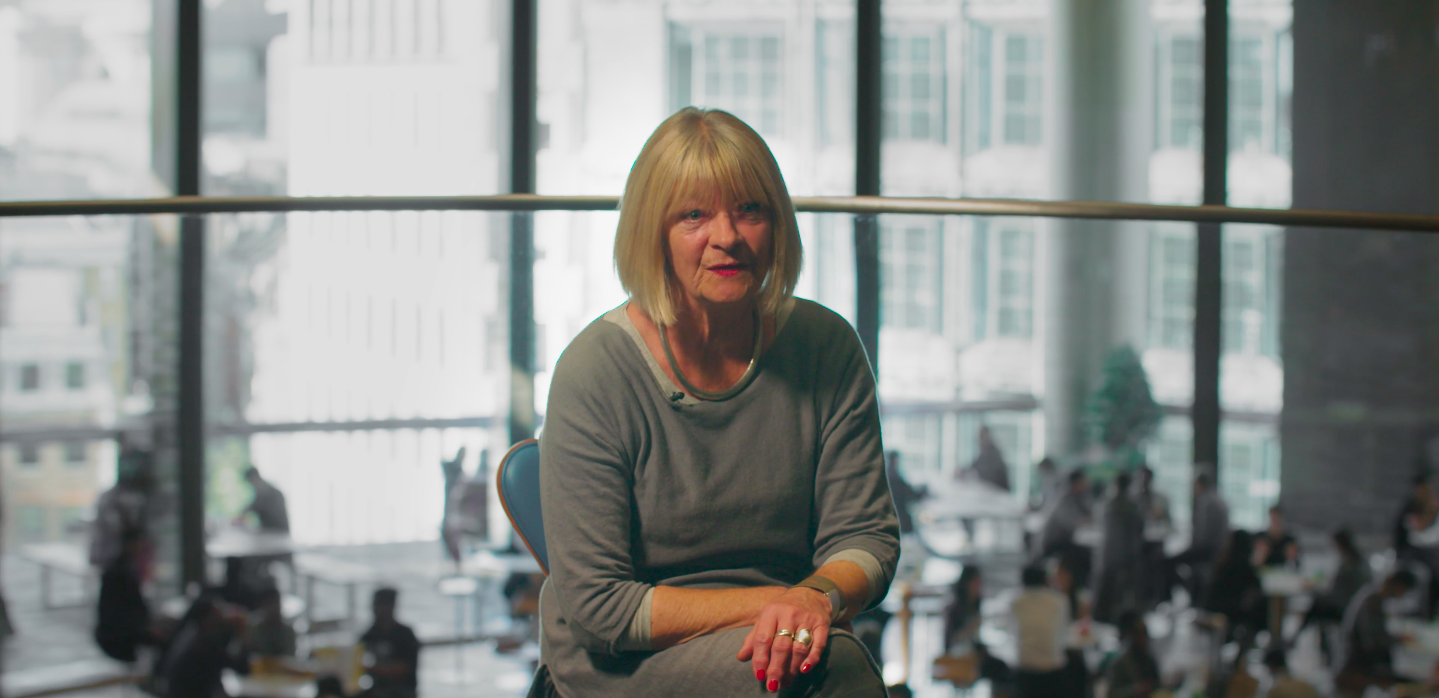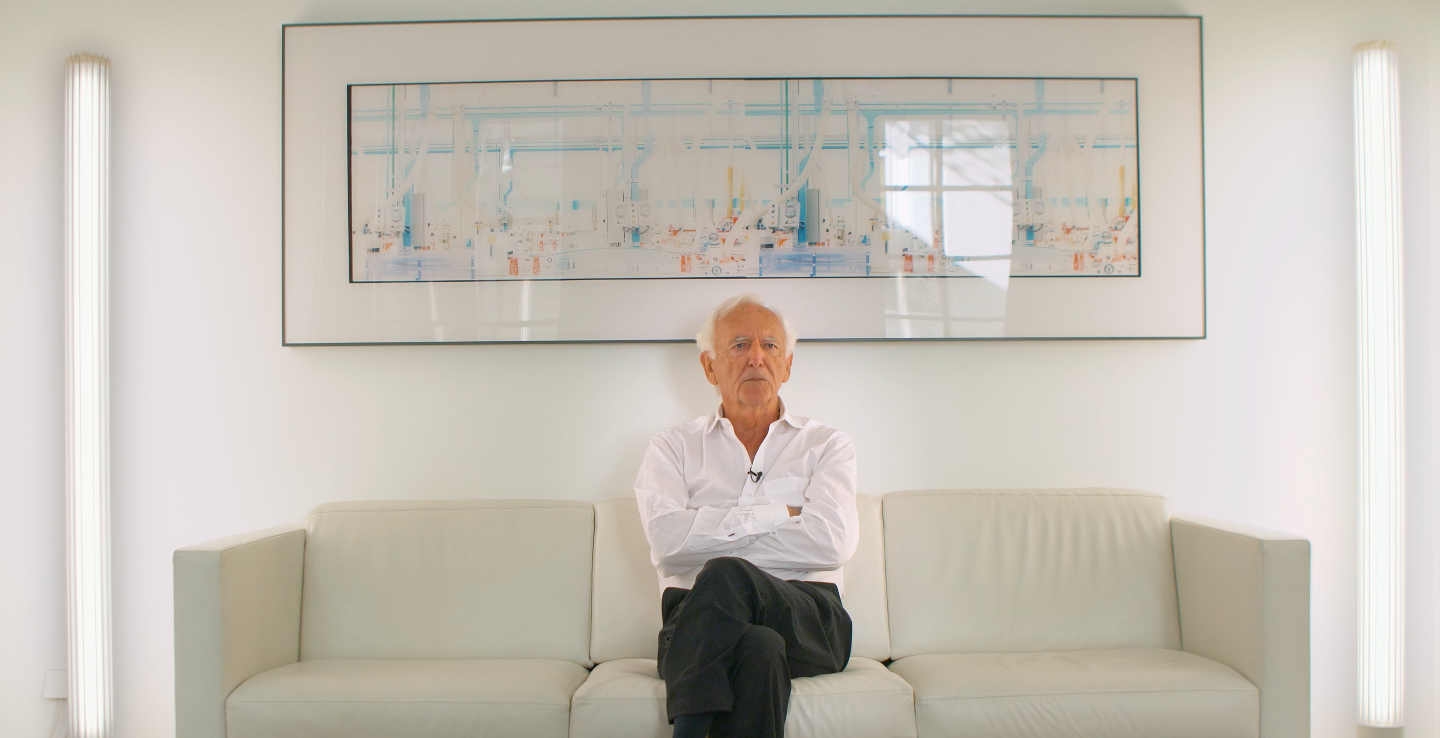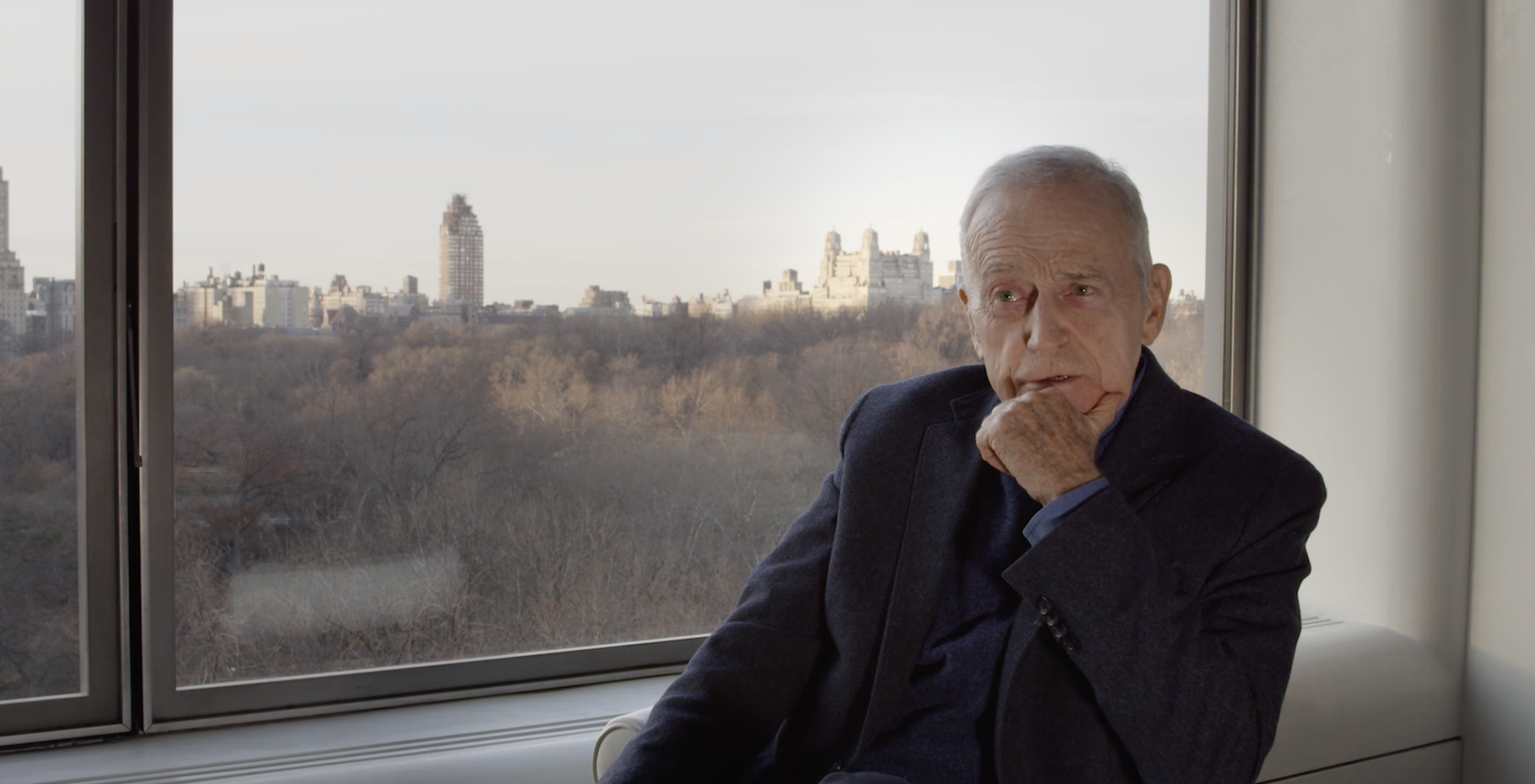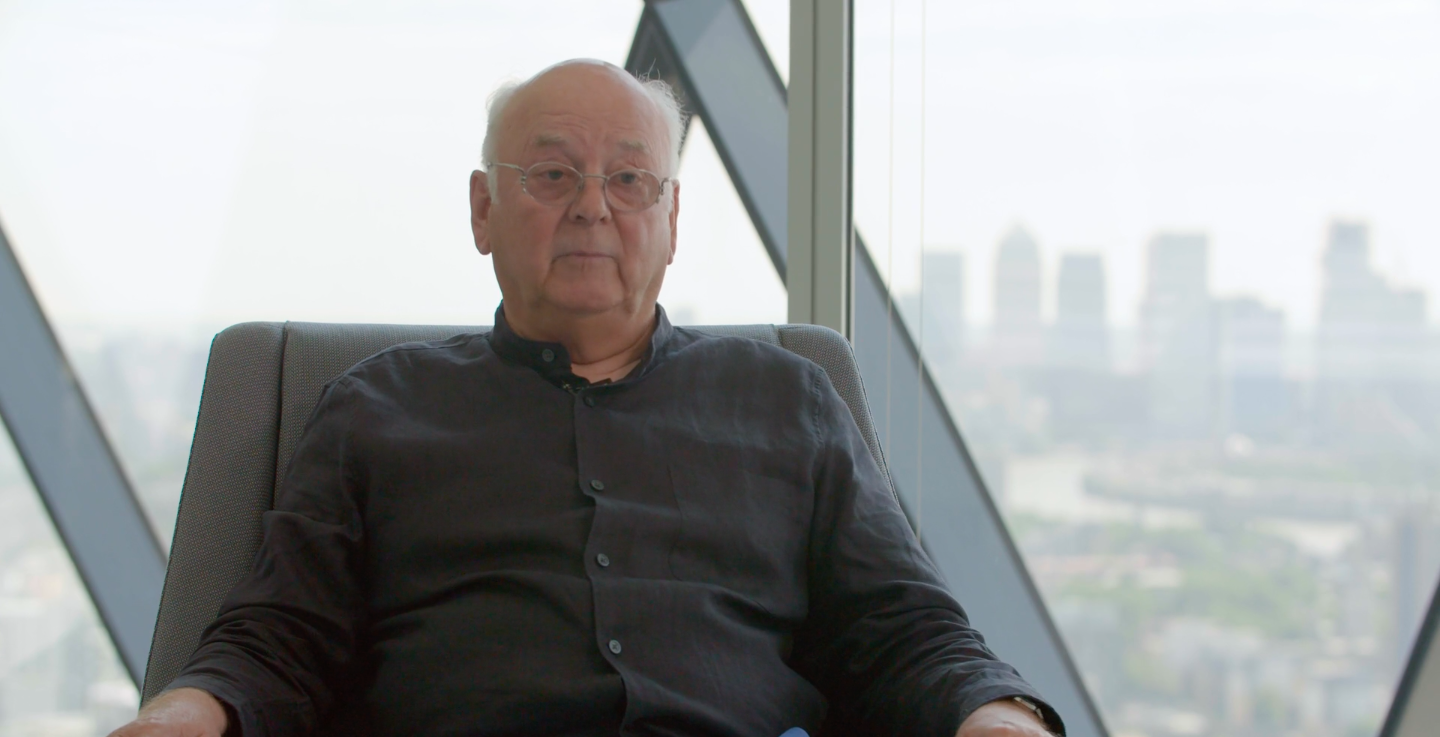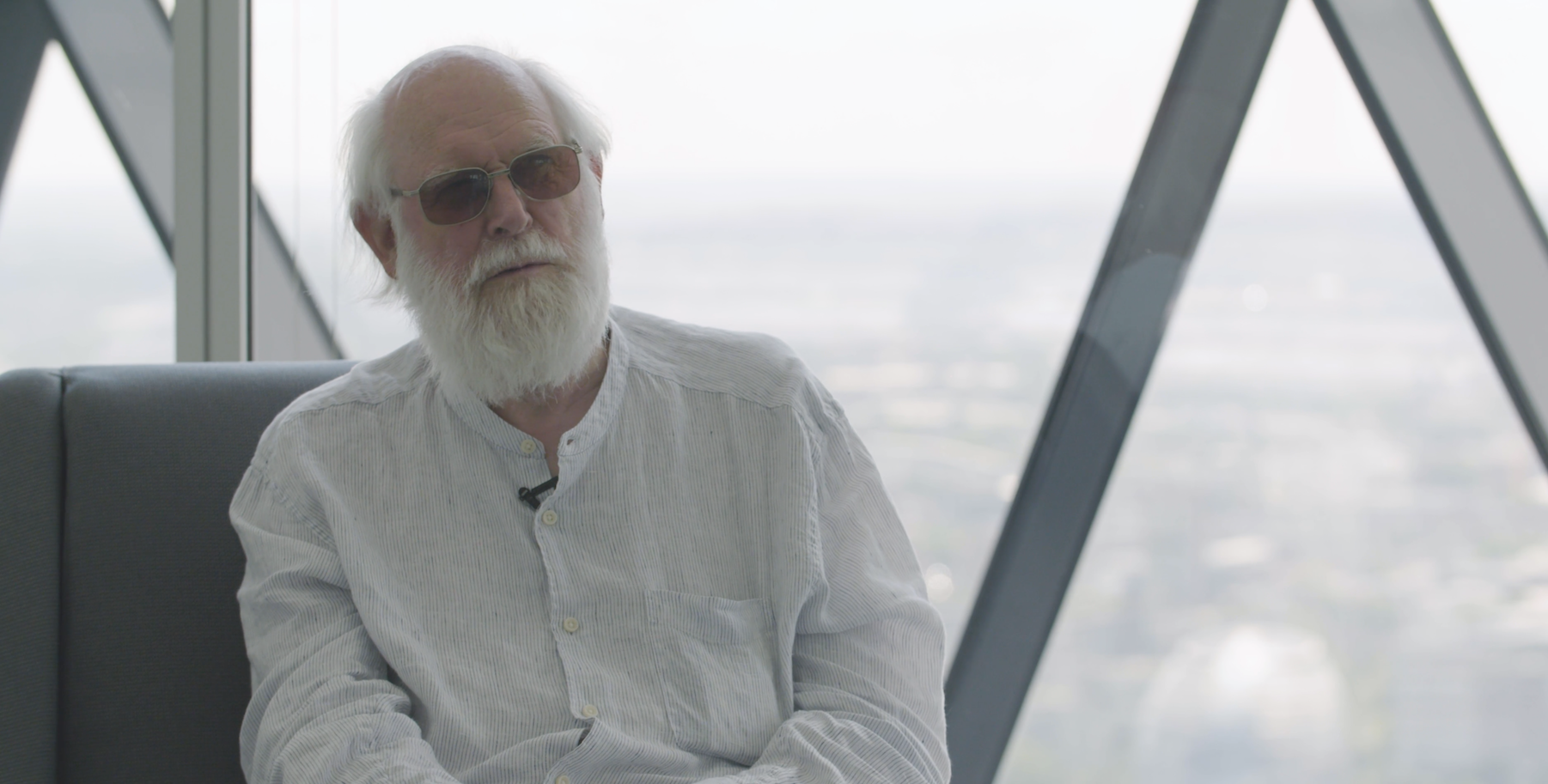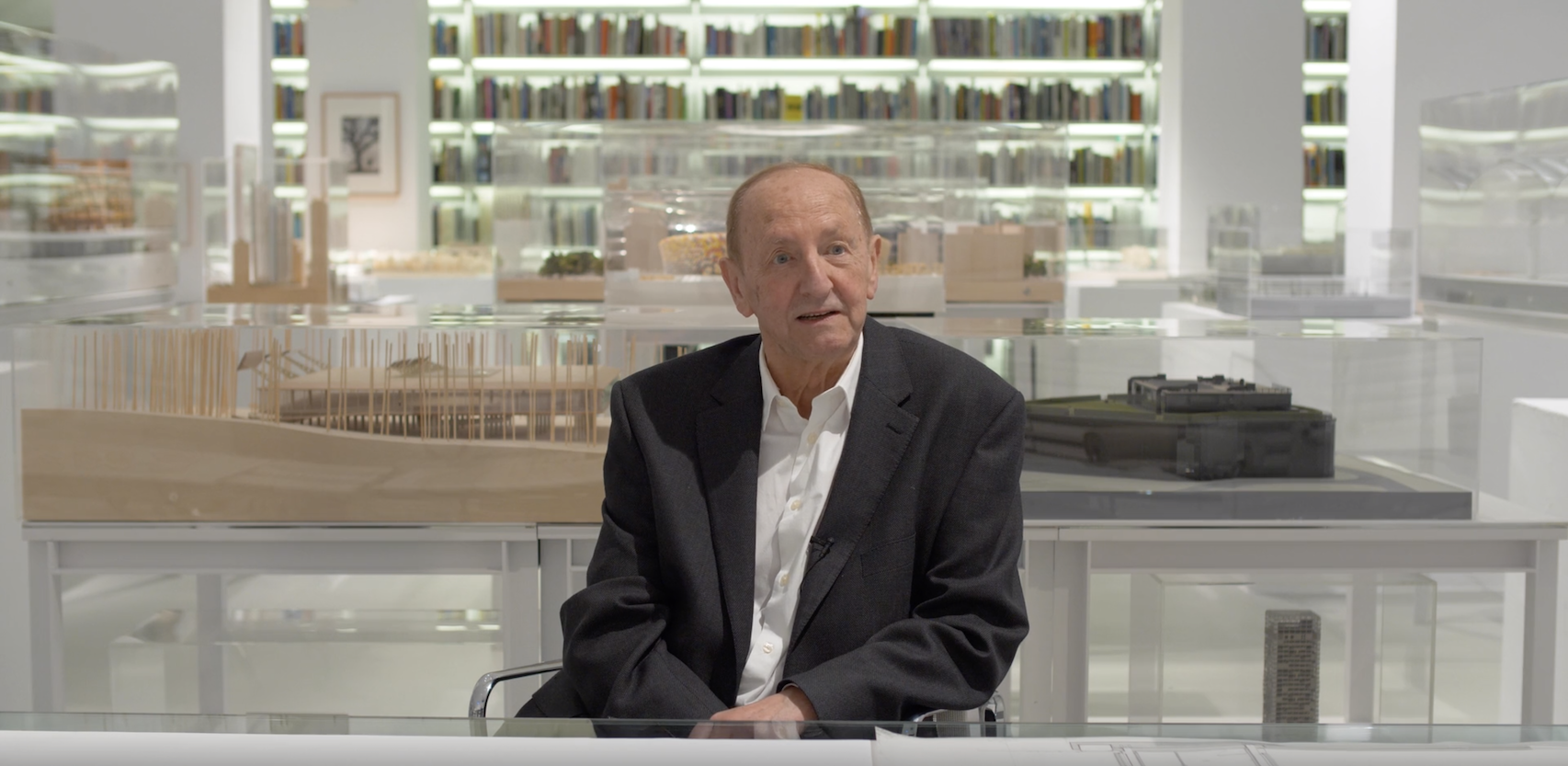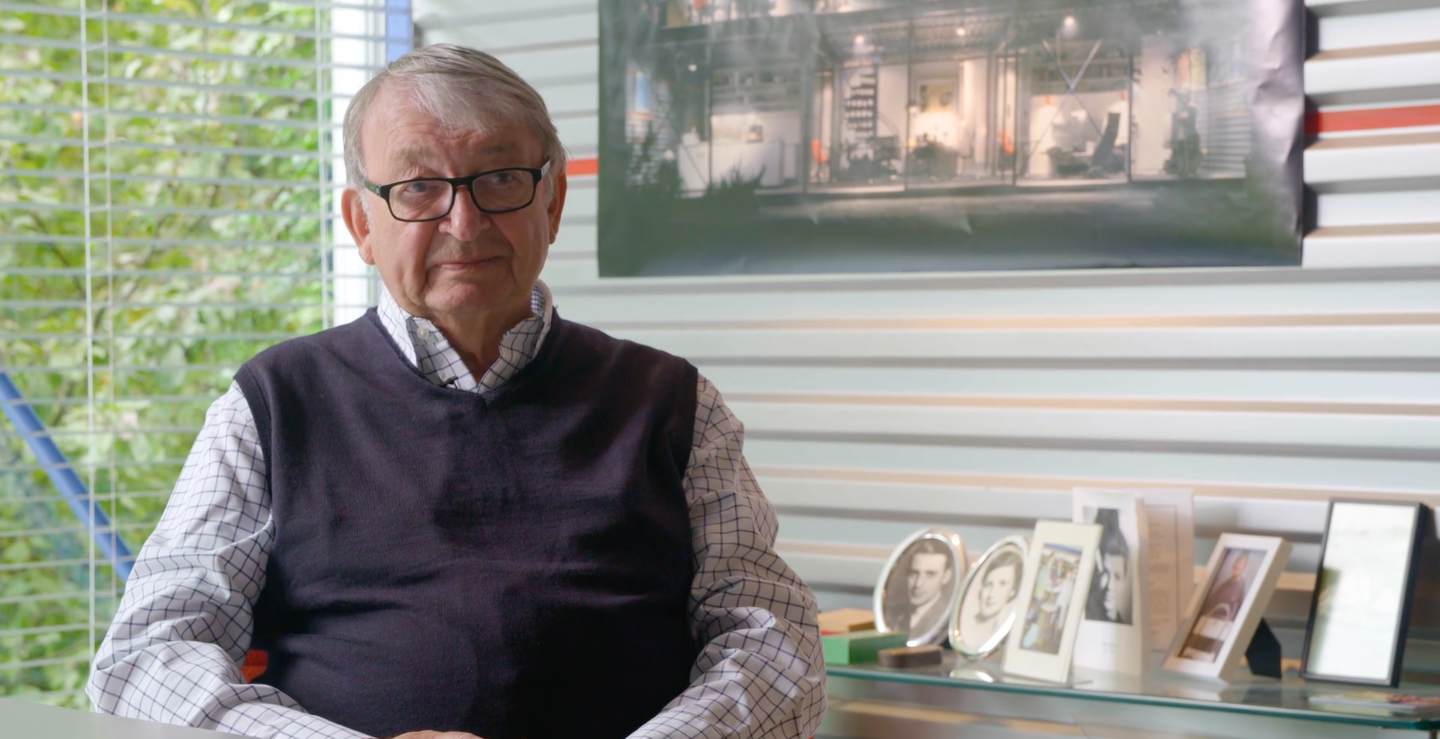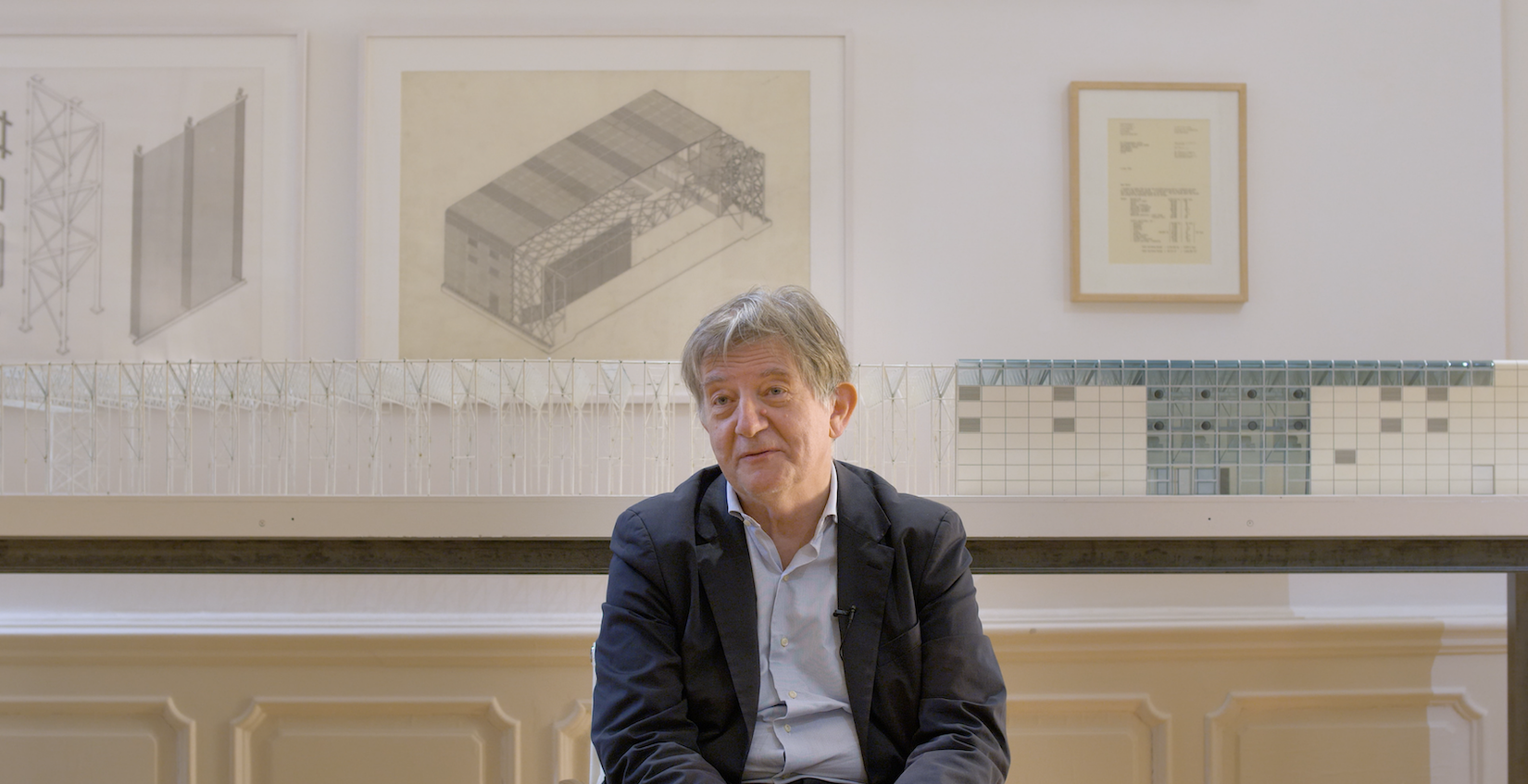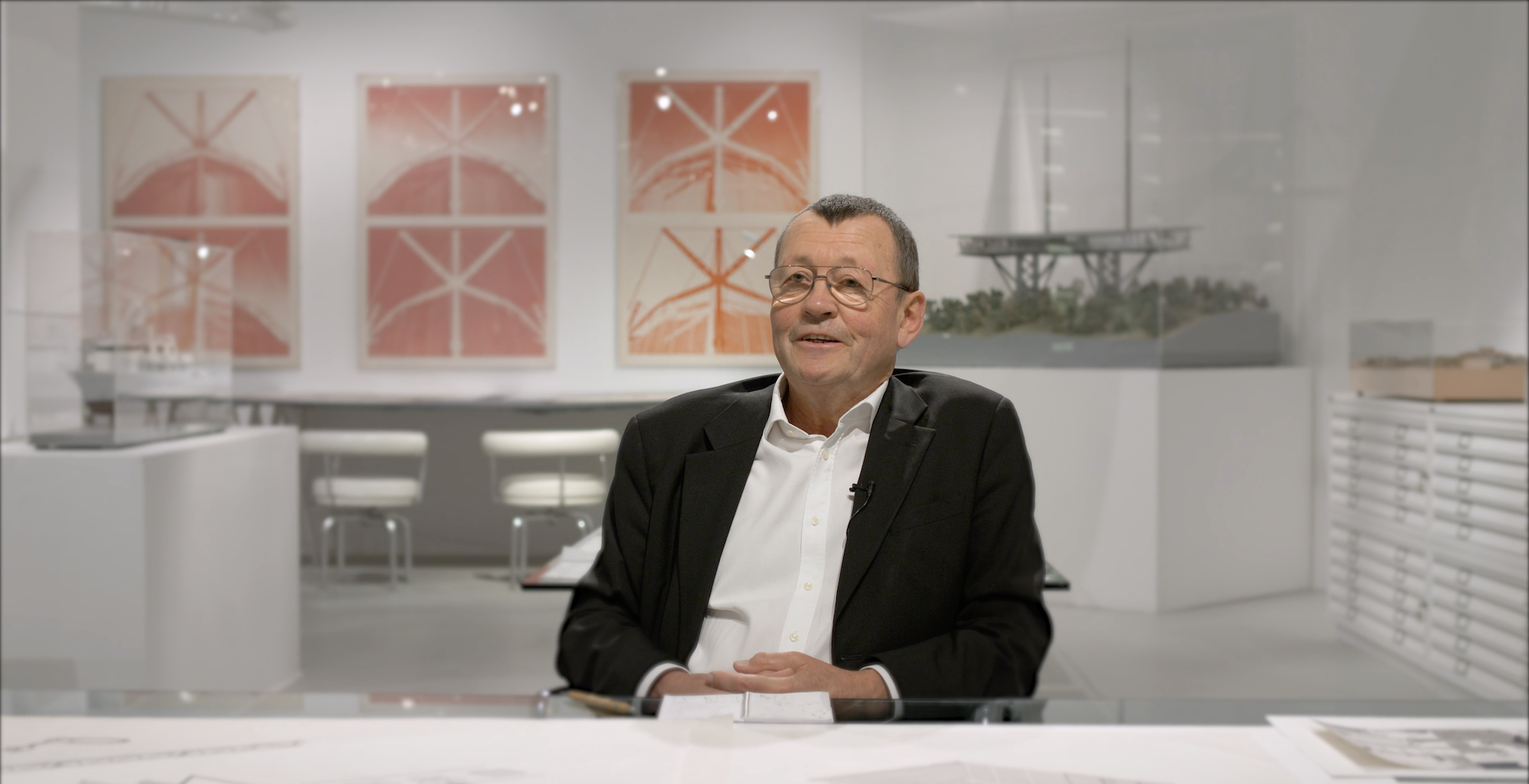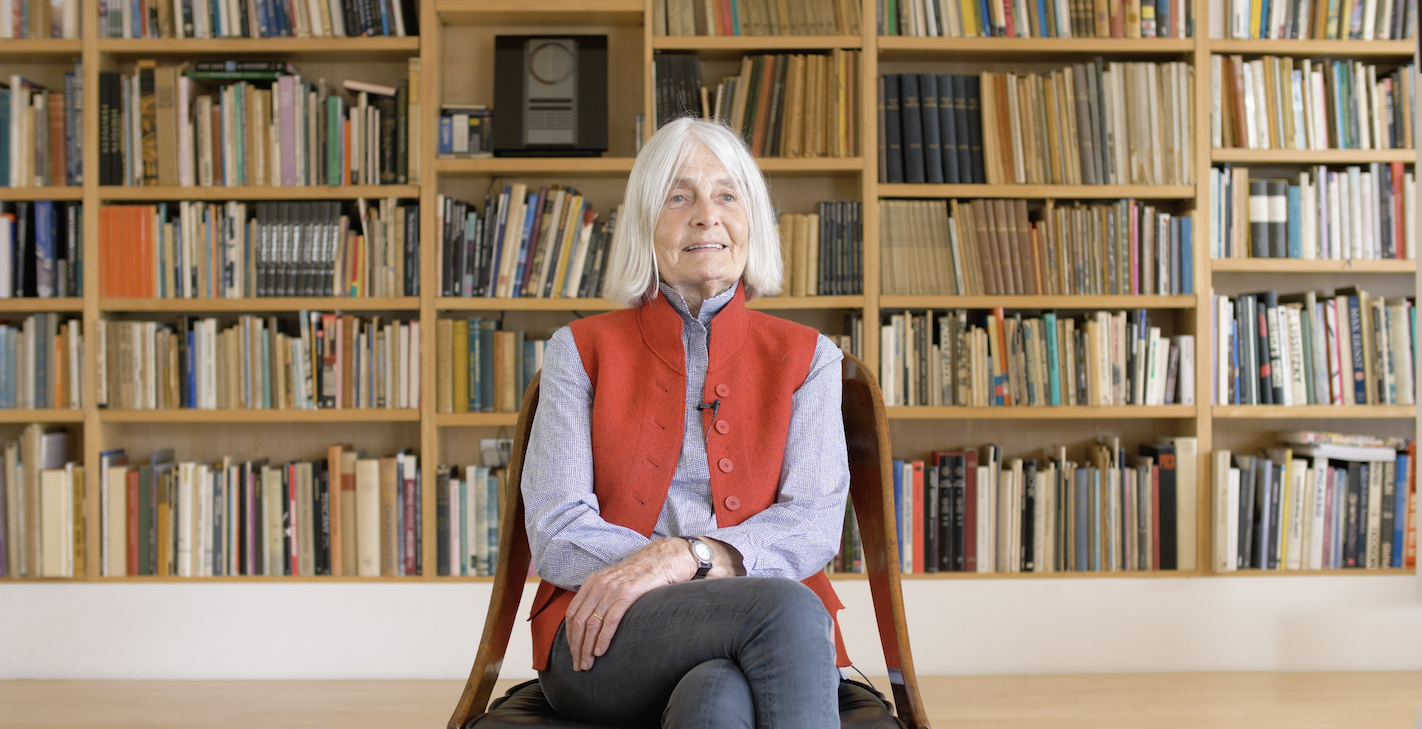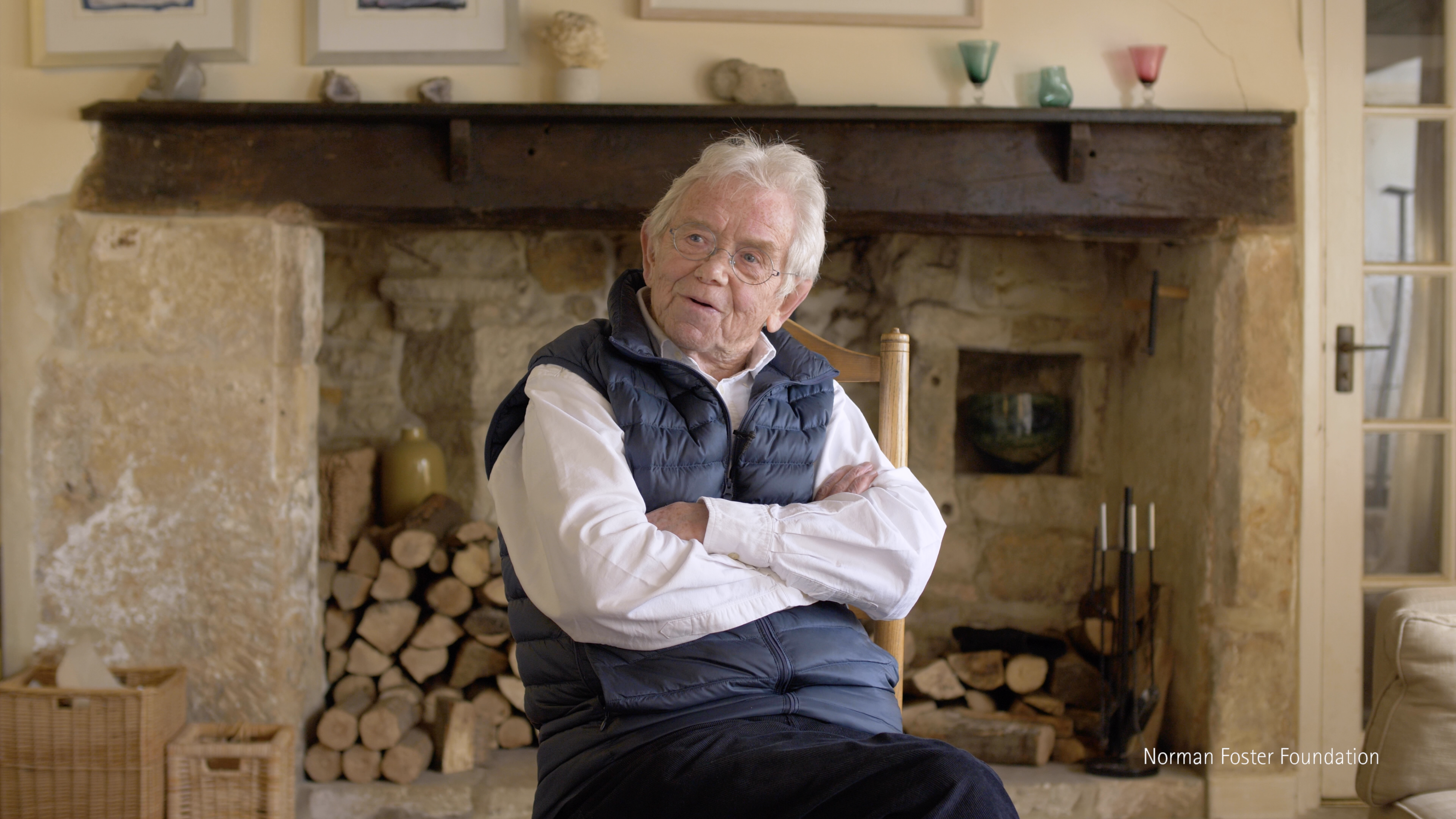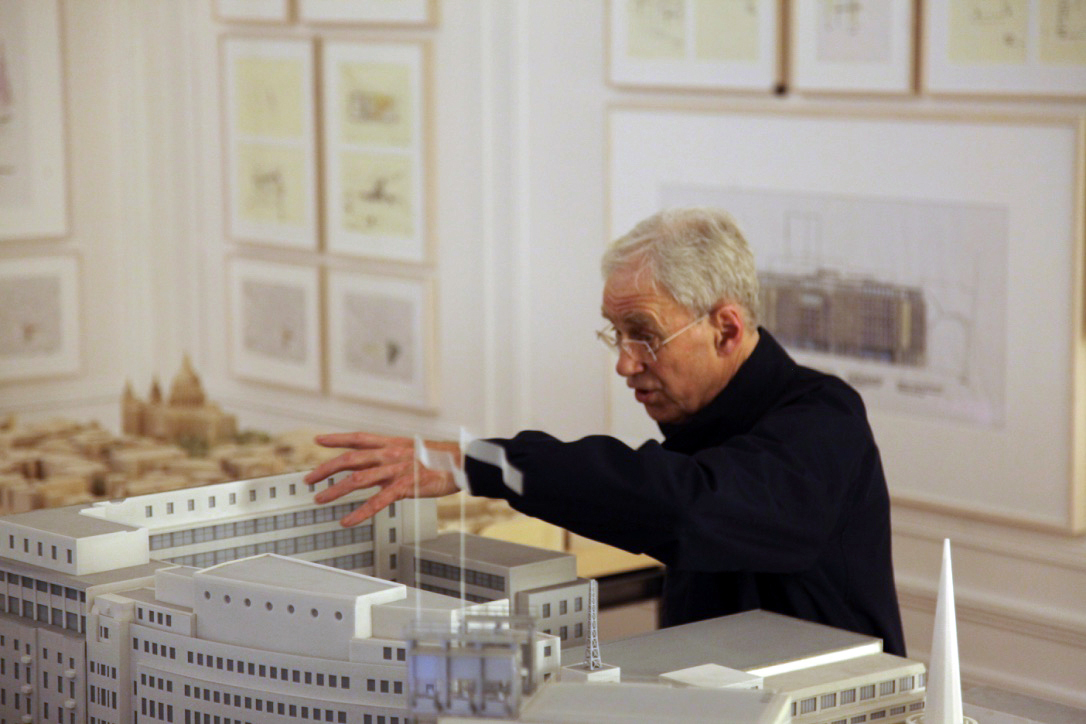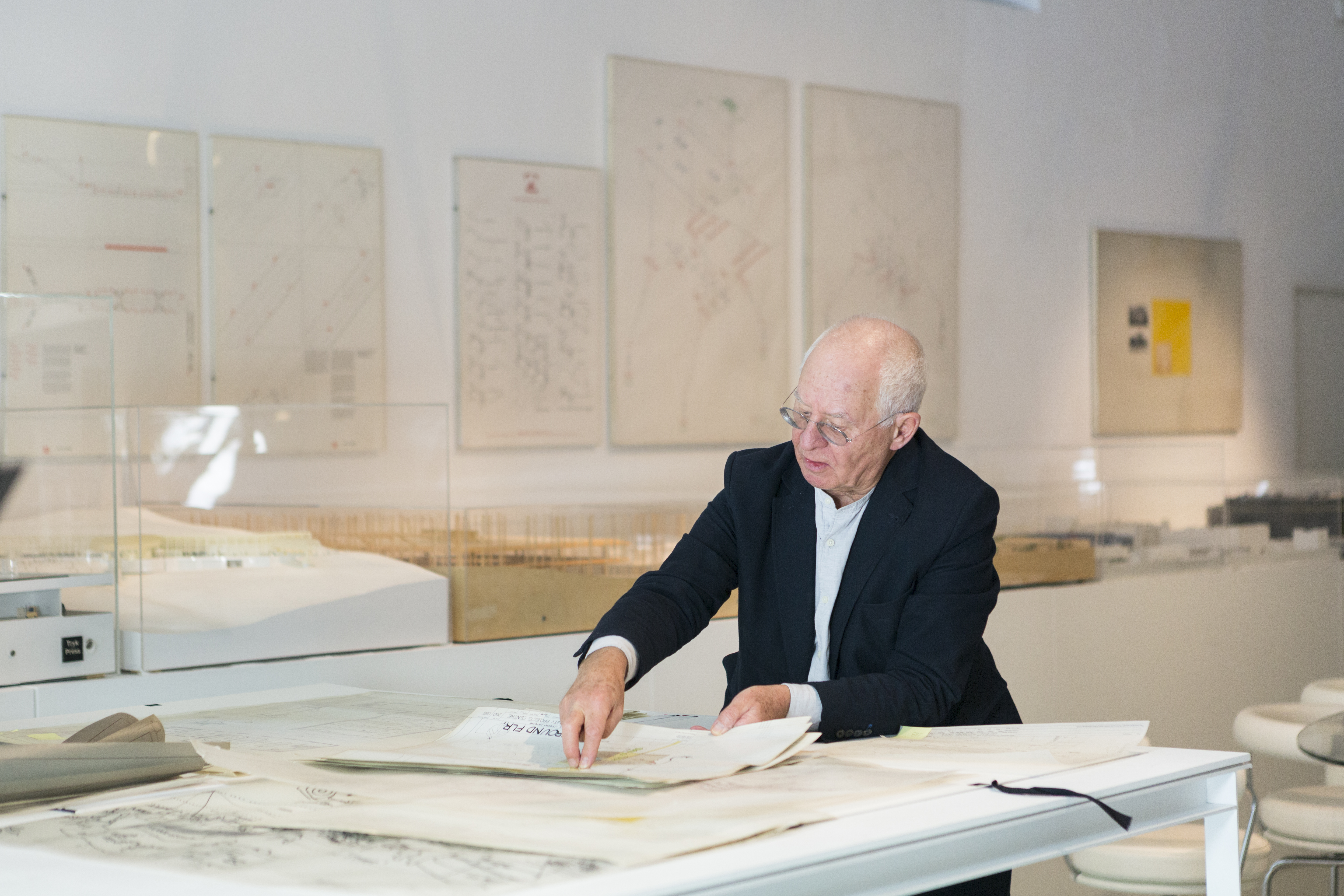Neil Vandersteen
In this episode of our 'Inside the Archive' series, we talk to Neil Vandersteen, Senior Partner and Head of Modelshop at Foster + Partners.
Nigel Young
In this episode of our 'Inside the Archive' series, we talk to Nigel Young, photographer Partner of Foster + Partners.
Pablo Urango
In this episode of our 'Inside the Archive' series, we talk to Pablo Urango, co-director and Partner of Foster + Partners in Madrid.
Taba Rasti
For this episode of our 'Inside the Archive' series, we meet Taba Rasti, Senior Partner and co-directs the Foster + Partners office in Madrid.
Jane Hamilton
In this episode of our 'Inside the Archive' series, we talk to Jane Hamilton, who worked at Foster + Partners for 7 years as Norman Foster's personal assistant.
Matthew Foreman
For the forty-second episode of our ‘Inside the Archive’ series, we meet Matthew Foreman, partner in Foster + Partners, who joined the company in 1998, and talks about his career in the firm, especially focusing on the moment he suggested to make a library, which collected not only books, but also journals and newspapers.
Christopher Trott
For the forty-first episode of our ‘Inside the Archive’ series, we join Christopher Trott, Partner and Head of Sustainability at Foster + Partners, who joined the studio to setup the Integrated Engineering team. Having already worked with Norman Foster, Trott admired the way he raised questions others had not considered, and 'drove the dialogue' with a deep understanding of the built environment.
Martin Francis
For the fortieth episode of the 'Inside the Archive' series we join Martin Francis, Director of Francis Design Limited, and Co-Founder of RFR. He recalls first meeting Norman Foster while working for celebrated engineer, Tony Hunt. This encounter in a Covent Garden restaurant would prove 'the start of a long and very fruitful friendship'.
Bobbie Michael
For the thirty-ninth of our 'Inside the Archive' series, Bobbie Michael, Partner and Financial Controller at Foster + Partners, looks back on her earliest position with the studio. With a background in the creative industries, and no prior experience of architecture, the post, initially temporary, was offered to her on a full-time basis. Michael joined the studio and began working directly with Norman Foster.
David Jenkins
In this episode of our ‘Inside the Archive’, architect, author, and Publisher at Circa Press, David Jenkins, remembers his earliest encounter with Norman Foster. While working on articles dedicated to Foster’s architecture, Jenkins’s ability to persuasively present compromised projects in a positive light won Foster’s admiration. It would be over a decade later when Jenkins again collaborated with Foster, moving into the studio itself.
David Summerfield
For this episode of our ‘Inside the Archive’ series, we join David Summerfield, Senior Executive Partner and Head of Studio at Foster + Partners, who recounts his first meetings with Norman Foster. These occurred at design reviews and site visits for the North Greenwich Transport Interchange, after which Summerfield moved to the very different environment of Hong Kong.
Gayle Mault
In this episode of our ‘Inside the Archive’ series we join Gayle Mault, former Associate Partner in Communications at Foster + Partners, leads us through her time at the studio. Originally arriving as a freelancer, Mault eventually stayed with the studio for ten years as part of a busy team which witnessed an expansion in the number of projects, and the resulting greater need for coordinated communication.
Piers Heath
For the thirty-fifth episode of the ‘Inside the Archive’ series we join Piers Heath, Senior Partner and Head of Environmental Engineering at Foster + Partners, who retraces his work providing strategy and design support for studio projects. Influenced by Norman Foster from early in his career, after starting his own practice and numerous meetings Heath joined Foster + Partners in what proved “a fantastic experience”.
Martha Tsigkari
For this episode of our ‘Inside the Archive’ series, Martha Tsigkari, Partner and Design Systems Analyst at Foster + Partners, takes us through working on projects as part of the Applied Research and Development group. Knowing of Norman Foster since architecture school, Tsigkari notes that during her career she has seldom encountered someone with “that sense of intuition”.
Roger Ridsdill Smith
For the thirty-third episode of the ‘Inside the Archive’ series, we join Senior Partner and Head of Structural Engineering at Foster + Partners, Roger Ridsdill Smith. Joining the studio in 2011 to set up an internal structural team, he reflects how the experience widened his perspective on design. He immediately felt part of a culture of “intense discussion” to “evolve both the design and the design philosophy”.
Mike Holland
In this episode of the ‘Inside the Archive’ series, Mike Holland, Head of Industrial Design at Foster+Partners, recalls his earliest years in the studio as he seized the opportunity to work with John Small and Norman Foster. Having joined the furniture design team in May 1995, Holland is keen to reaffirm the importance of product design which takes into account environmental impact.
Luke Fox
In this episode of the ‘Inside the Archive’ series, Luke Fox, Senior Executive Partner at Foster + Partners, remembers joining the office and feeling impressed by ‘the unquenchable thirst for options and testing and analysis’ emanating from every member of the team in their creation of unique designs.
Russell Hales
In this episode of the ‘Inside the Archive’ series, Russell Hales, Senior Partner at Foster + Partners, looks back at his fresh out-of-school experience when joining the studio team in a very hands-on practice professional experience.
Mouzhan Majidi
For this episode of our ‘Inside the Archive’ series, we join the Chief Executive of Zaha Hadid Architects, Mouzhan Majidi. A former Chief Executive at Foster + Partners, Majidi recalls his first impressions of meeting Norman Foster in 1986. Then a young graduate from Scotland, the following year Majidi joined Foster Associates at their celebrated premises in Great Portland Street, London.
Michael Jones
In the twenty-eighth episode of our ‘Inside the Archive’ series, we join Senior Partner of Foster + Partners, Michael Jones, who looks back to 1986 when he applied to join the “top three practices in Britain”. Though offered places with all three, Jones was drawn to Foster Associates as this firm displayed the design philosophy and aesthetic he admired and wished to learn more about.
John Small
For the twenty-seventh episode of our ‘Inside the Archive’ series, John Small, Director of Industrial Design at EMEA, Steelcase, takes us back to 1985, when as a graduate he was awaiting an interview with Norman Foster. Although Small had already been offered a position with a different company, the experience led him to decide that he would rather work at Foster Associates than any other practice.
Gerard Evenden
For our next ‘Inside the Archive’ interview Gerard Evenden, Senior Partner and Head of Studio at Foster + Partners, recounts how his first, temporary role with the practice became more permanent against the backdrop of ‘big economic downturn’. Evenden highlights the role of team members as they worked together and formed strong professional bonds through the shared experience of lengthy projects.
Armstrong Yakubu
For our next ‘Inside the Archive’ interview, Senior Partner and Design Board member, Armstrong Yakubu recalls his first encounter with Norman Foster’s work as a student at the Architectural Association, London. Under the tutelage of Ron Herron and Jan Kaplicky, Yakubu was inspired to apply to Foster Associates. He successfully got an interview and has been at the practice ever since.
Narinder Sagoo
For the twenty-fourth episode of our ‘Inside the Archive’ series Narrinder Sagoo, Art Director and Senior Partner at Foster + Partners, speaks of the chance encounter that launched his career with Norman Foster. As a young student, Sagoo attended a talk given by one of the practice’s directors. Plucking up the courage to ask whether any openings were available, he was eventually offered a position at Riverside.
Grant Brooker
In this episode of the ‘Inside the Archive’ series, Grant Brooker, a Senior Executive Partner at Foster + Partners, looks back upon his time with the studio. He joined one of the teams preparing a masterplan for King’s Cross, working through never-ending hours in search of perfection and developing intuition as part of his work.
Graham Phillips
In this episode of the ‘Inside the Archive’ series, Architect Graham Phillips recalls anecdotes of his first encounter with Norman Foster as he started to work with the practice. Phillips then reexamined the Sainsbury Centre project, considering Sir Robert Sainsbury’s appreciation of the project and the qualities of the building’s design. Graham Phillips concludes with the production of the HSBC building in a pre-computer era, raising the question of the role of technology in architectural progress.
David Chipperfield
In this episode of the ‘Inside the Archive’ series, English Architect Sir David Chipperfield relives his time with Foster Associates. As he started working with Richard Rogers and Birkin Haward for competitions, the architect continued his impactful work with the group through projects such as the HSBC building and the BBC Radio Centre. After exploring the question of technology, Chipperfield is led to recall his experience of the Willis Faber & Dumas Headquarters.
Nigel Dancey
In this new episode of the ‘Inside the Archive’ series, Senior Executive Partner at Foster + Partners, Nigel Dancey reminisces how he came to work with the group as well as how the office started with limited technologies distinct from today. Dancey evokes the Comcast tower project and the McLaren Production Centre, projects in which he collaborated and that both were special to him.
Spencer de Grey
In the nineteenth episode of our ‘Inside the Archive’ series, Senior Executive Partner at Foster + Partners, Spencer de Grey, shares his first encounter with the practice. One lunchtime in February 1973, de Grey was “completely overwhelmed” by a talk on the glass wall of the Willis Faber & Dumas building in Ipswich. The opportunity to work with Norman Foster made him feel “inspired and excited”, though he did not foresee still working with him some forty-six years later.
David Nelson
Starting his narration at the end of the seventies oil crisis period, in this episode of the ‘Inside the Archive’ series, Designer David Nelson recalls his beginning in the practice in 1976 as well as his collaborative projects with the group before stressing the importance of listening, delegating and encouraging fellow professionals.
Katy Harris
In this episode of the 'Inside the Archive' series, Communication Practitioner Katy Harris recreates her experience as part of the practice’s communications team as it grew from a team of two into a team of thirty.
Tim Street-Porter
In this episode of the 'Inside the Archive' series, Architectural Photographer Tim Street-Porter reports his first encounter with Norman Foster as he worked with the Architectural Review magazine and got invited to a flight experience aboard a glider with Foster.
Ken Shuttleworth
From his final year out at the Leicester School of Architecture to becoming a significant contributor to Foster’s projects, in this episode of the 'Inside the Archive' series, Architect Ken Shuttleworth walks us through his work experience and shares the many lessons learnt during his time with Norman Foster and the team.
Alan Stanton
In this episode of the 'Inside the Archive' series, Architect Alan Stanton recalls his encounter with Norman Foster during a job interview in London. Stanton evokes his impressions from his early experience working with TEAM 4 as well as the design culture of the team at the time sharing his views on the Newport School Competition and the Stansted Airport.
Sally Appleby
In this episode of the 'Inside the Archive' series, Sally Appleby —as TEAM 4’s assistant —speaks about the team’s first work together, her approach on projects such as Factory for Reliance Controls and Creek Vean as well as how Norman Foster impacted the practice and propelled architecture to another era as part of TEAM 4.
John Walker
In the latest episode of the 'Inside the Archive' series, quantity surveyor John Walker speaks about TEAM 4's first office space, the impact projects such as Reliance Controls Factory and Computer Technology had on Foster's political approach to architecture and Buckminster Fuller's determination to constantly reinvent himself which had a profound influence on Foster.
Carl Abbott
In the eleventh episode of the 'Inside the Archive' series, architect Carl Abbott provides an inside look into the formative two-year period he and Norman Foster spent at Yale, their creation of TEAM 4 with two other classmates soon after and Norman Foster's unique outlook that makes him more of a futurist than an architect.
John Young
In the tenth episode of the ‘Inside the Archive’ series, architect John Young speaks about his start at TEAM 4 while still a student, the two projects he took part in while at TEAM 4, the various historical predecessors for the firm’s work and the lessons he learned there that shaped his approach to architecture later on.
Laurie Abbott
In the ninth episode of the 'Inside the Archive' series, architect Laurie Abbott speaks about how he came to join Team 4 as a junior architect before moving to discuss the impact Creek Vean and the Factory for Reliance Controls had on the design of future housing and office buildings. Abbott briefly provides insight into the influence cars and mobility have had on both his and Norman's career before speaking about the lessons he learned while at Team 4.
John Yates
In the eighth episode of the ‘Inside the Archive’ series, lighting engineer John Yates speaks about his first collaboration with Norman Foster, the Wills Faber & Dumas building, before taking us behind the scenes of some of Foster's most celebrated projects including the Sainsbury's Centre for the Visual Arts and the SAPA factory in Tibshelf.
Michael Hopkins
In the seventh episode of the ‘Inside the Archive’ series, architect Michael Hopkins reflects on his early partnership with Norman Foster, the design and construction of the IBM Pilot Head Office and the Willis Faber & Dumas building, and the particular approach that has defined Norman Foster’s work throughout his career.
Deyan Sudjic
In the sixth episode of the ‘Inside the Archive’ Series, Deyan Sudjic, writer and director of the Design Museum in London, recollects his first encounters with Norman Foster’s practise, Foster’s breaking down of boundaries within his architectural projects and the importance of collaboration throughout Foster’s career.
Mark Sutcliffe
In the fifth episode of our ‘Inside the Archive’ series Mark Sutcliffe discusses his first impressions of Norman Foster, the guiding principles behind celebrated projects and the benefits of learning from mistakes.
Su Rogers
In the fourth episode of the ‘Inside the Archive’ series Su Rogers recalls her first meeting with Norman Foster, a deeply influential sojourn in the United States and the formation of Team 4.
Tony Hunt
In the third episode of 'Inside the Archive' series Tony Hunt, structural engineer, conveyed his records on the projects he was involved in during his time working with Norman Foster.
Loren Butt
In the second episode of the 'Inside the Archives' series Loren Butt, building services engineer conveyed his records on the projects he was involved in during his time working at Foster Associates.
Birkin Haward
The Norman Foster Foundation Inside the Archive Series is an important resource for scholars and researchers now and in the future. Part of this is the Oral History Programme, an audiovisual history with several key individuals who collaborated with Foster across his career to record their memories and experience of their collaboration. Their recorded insights augment and deepen the Archive, making it a comprehensive, cross-media resource for future generations of scholars.

